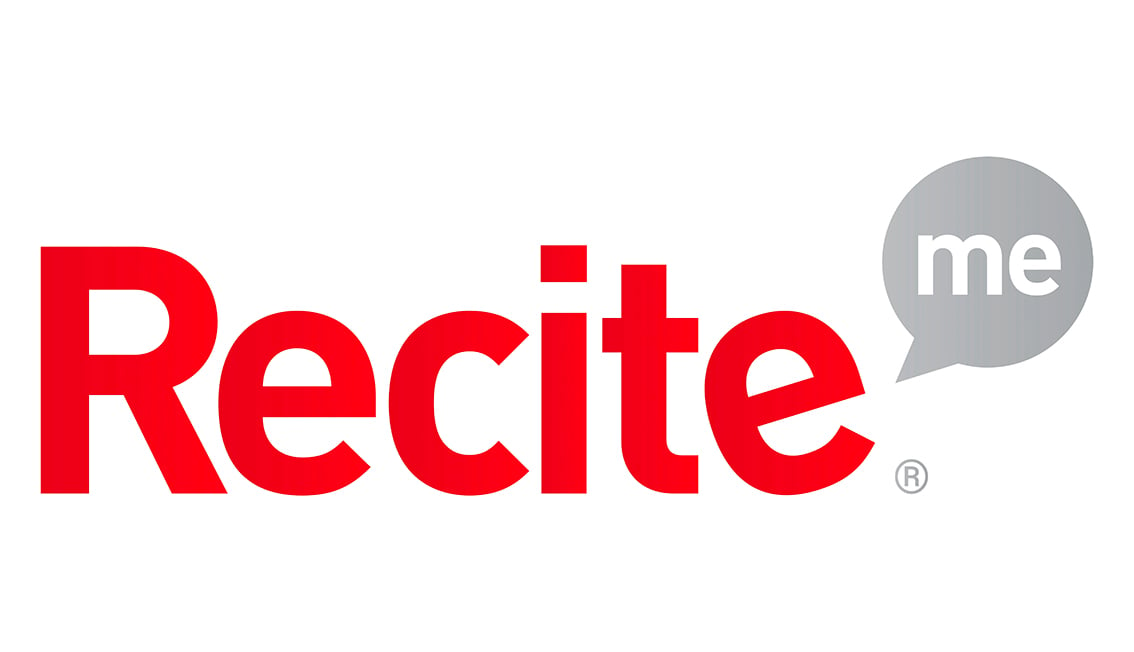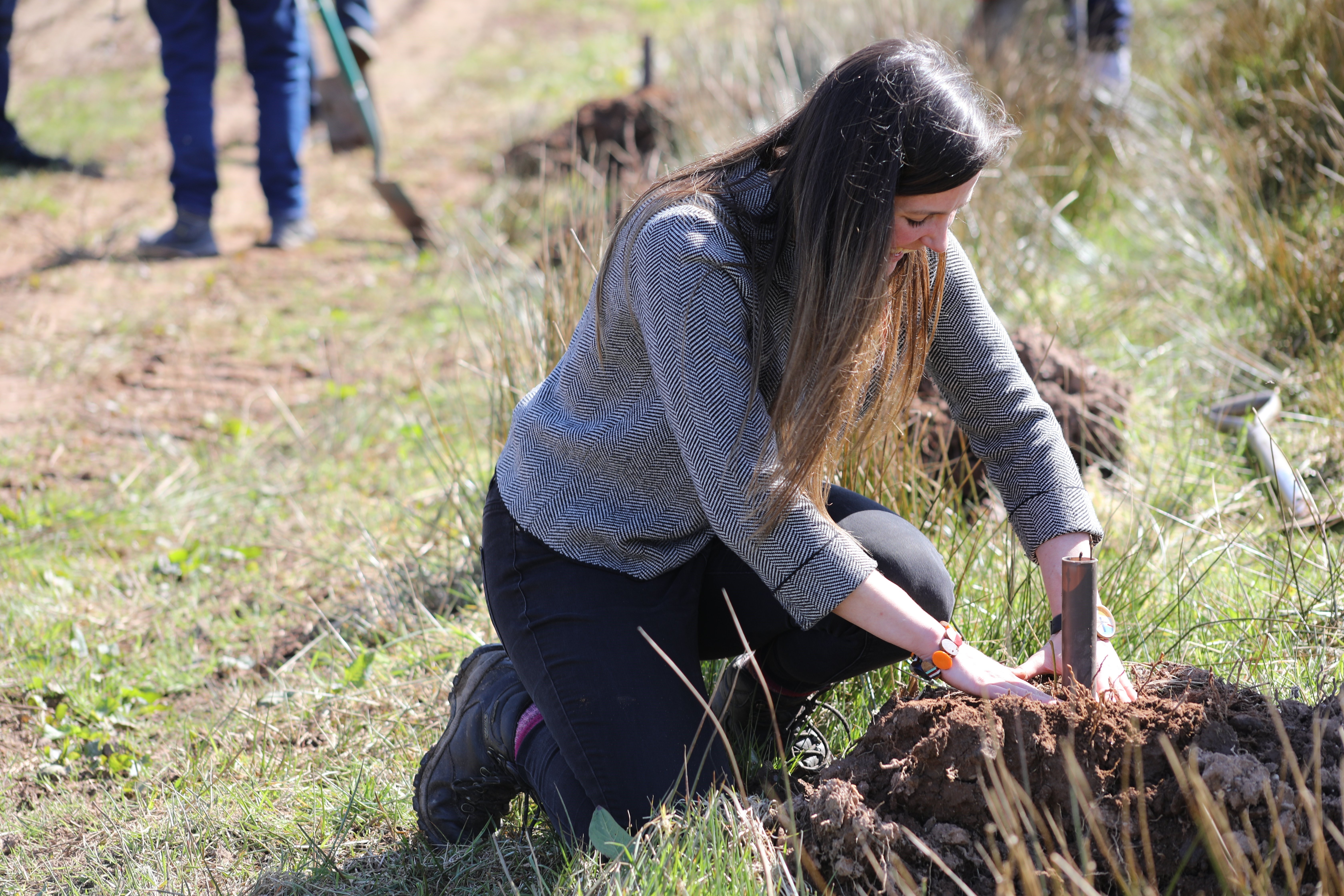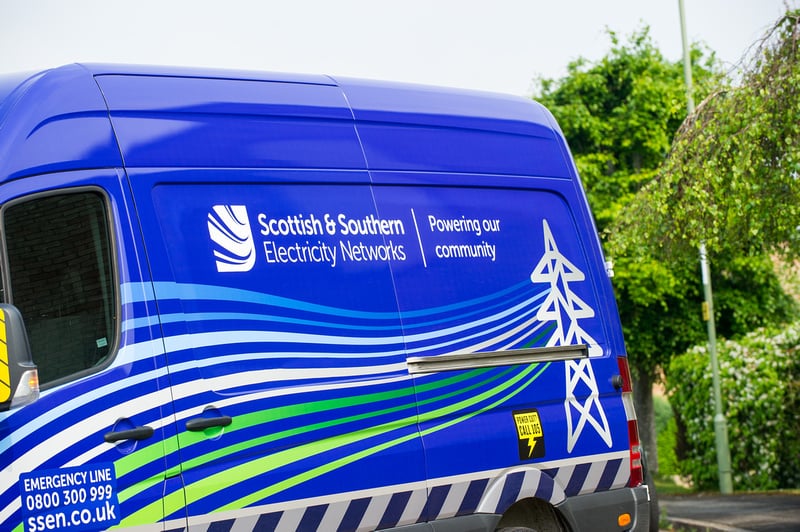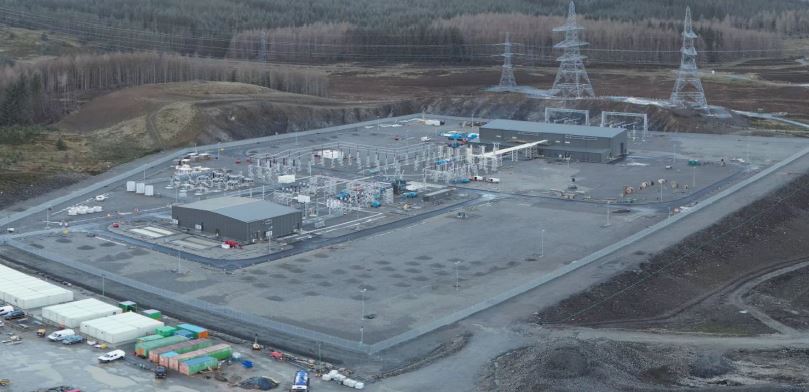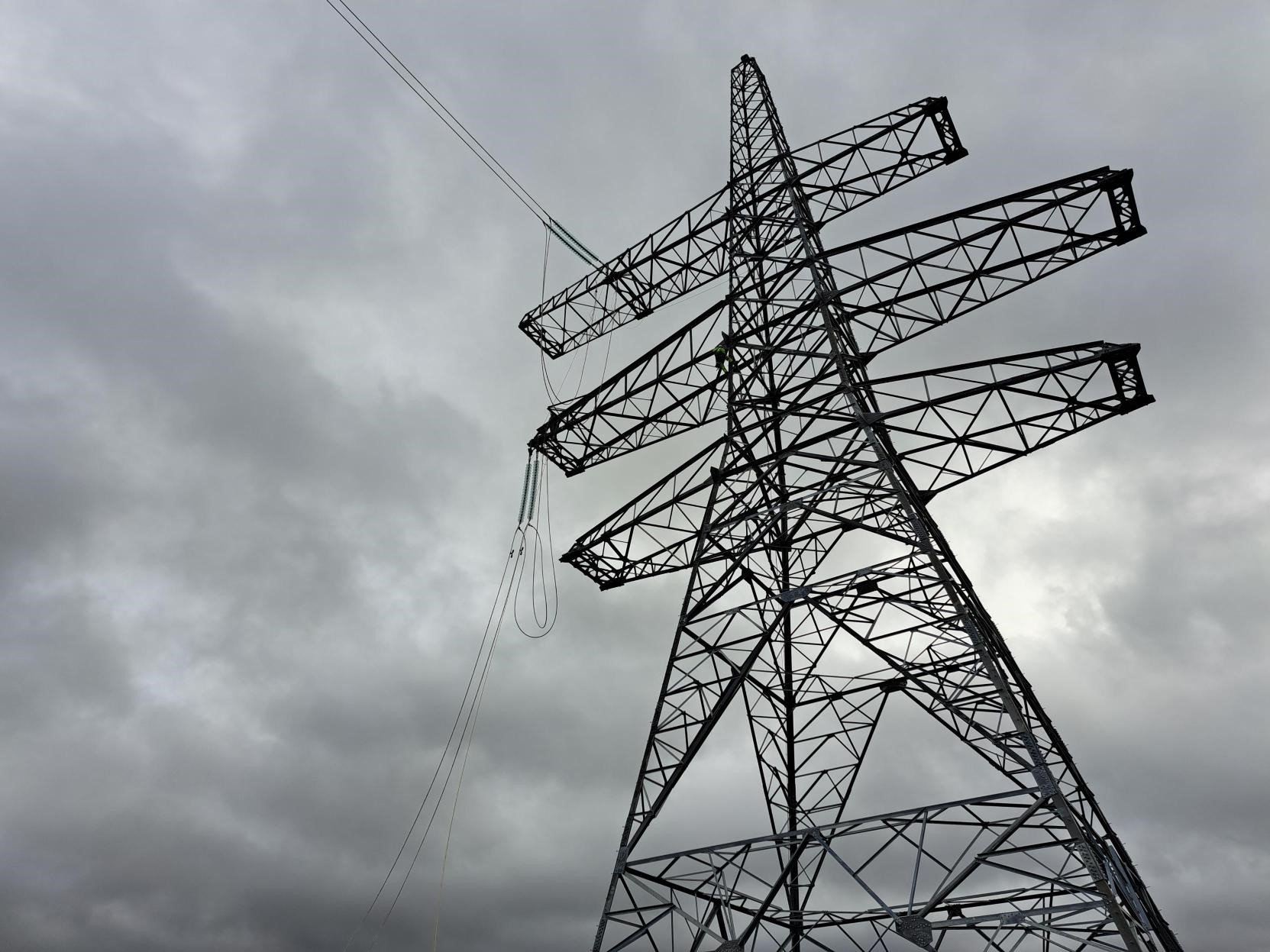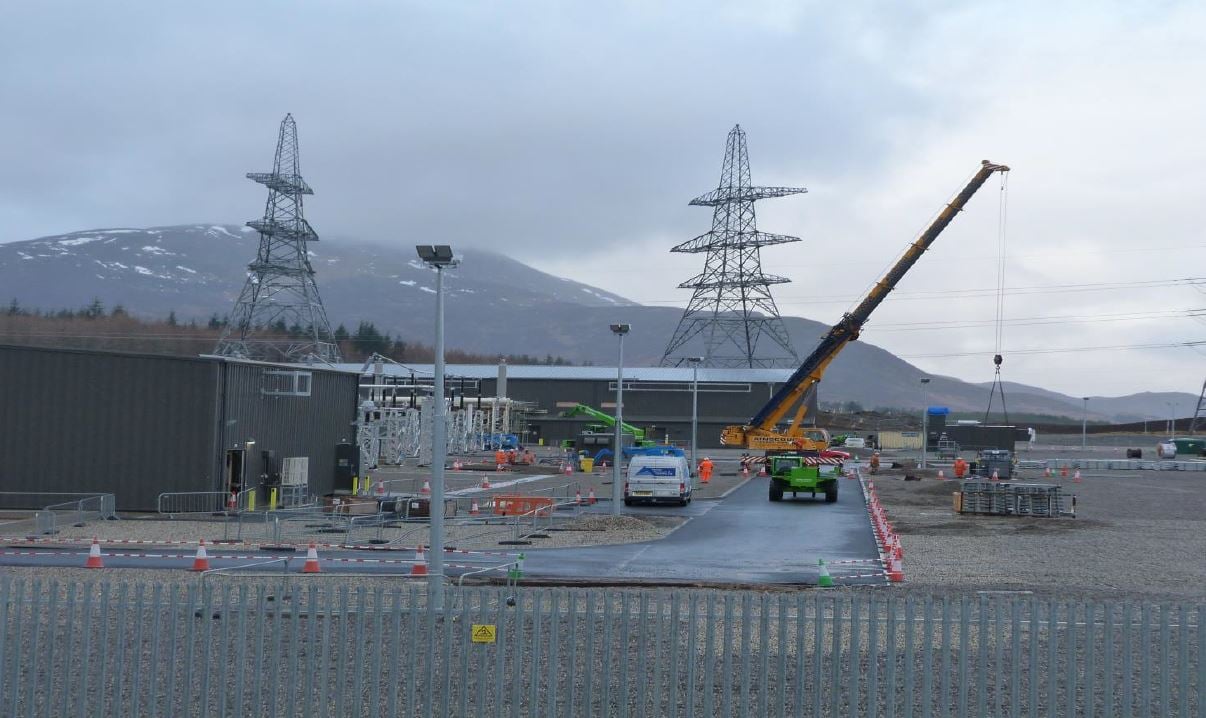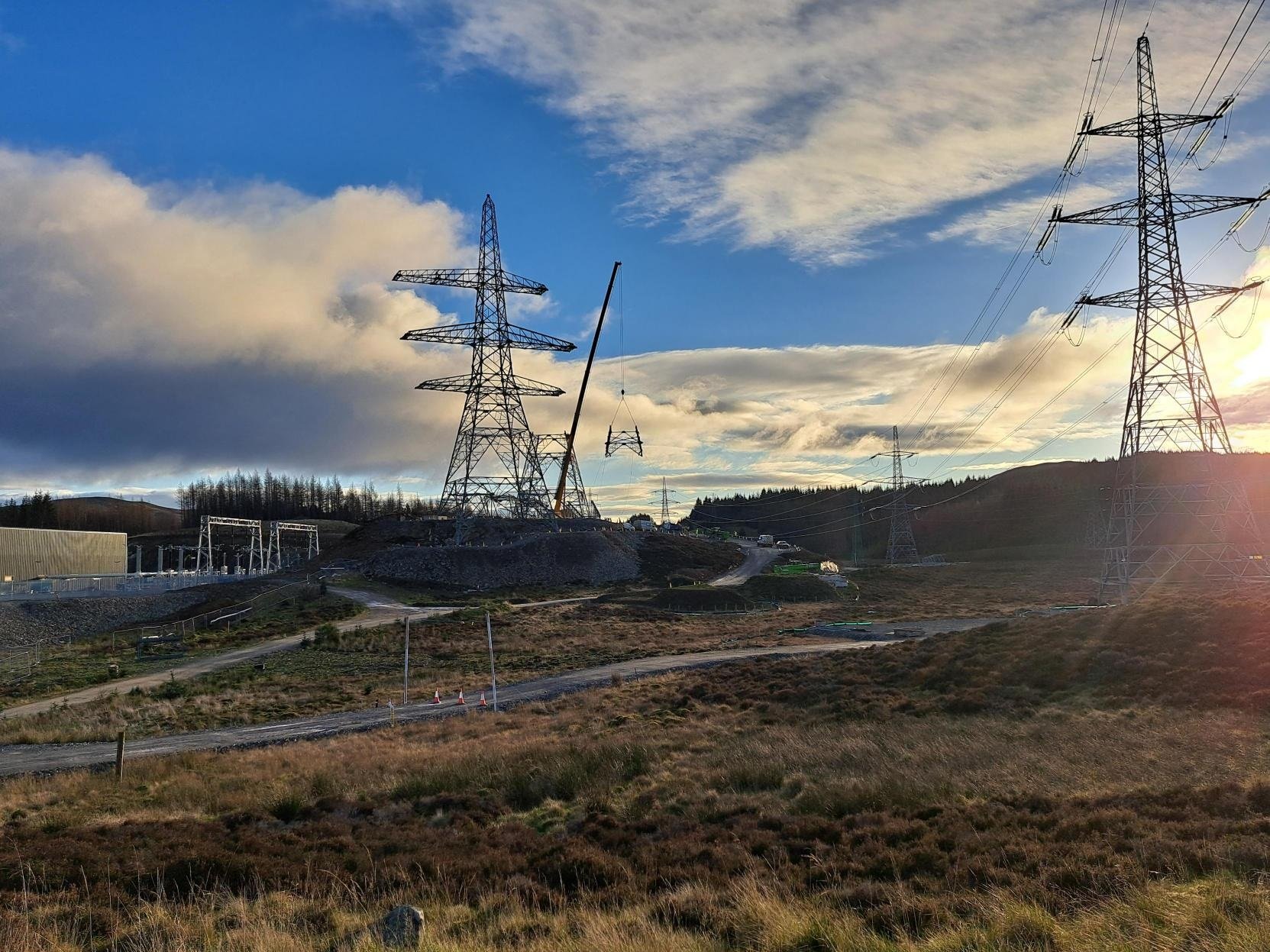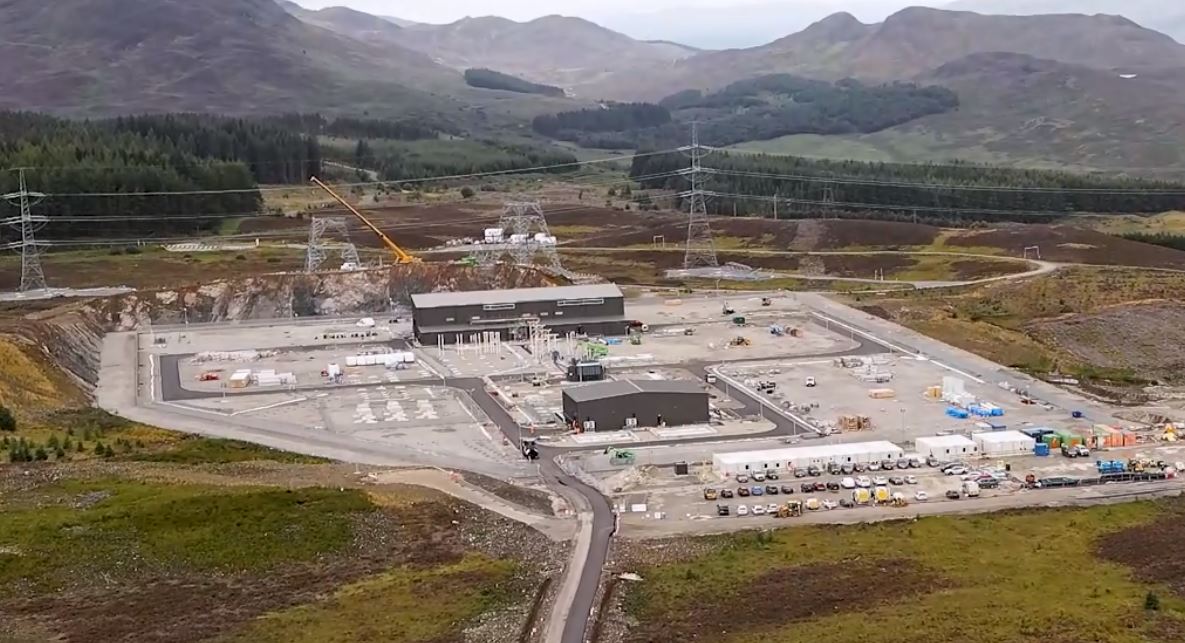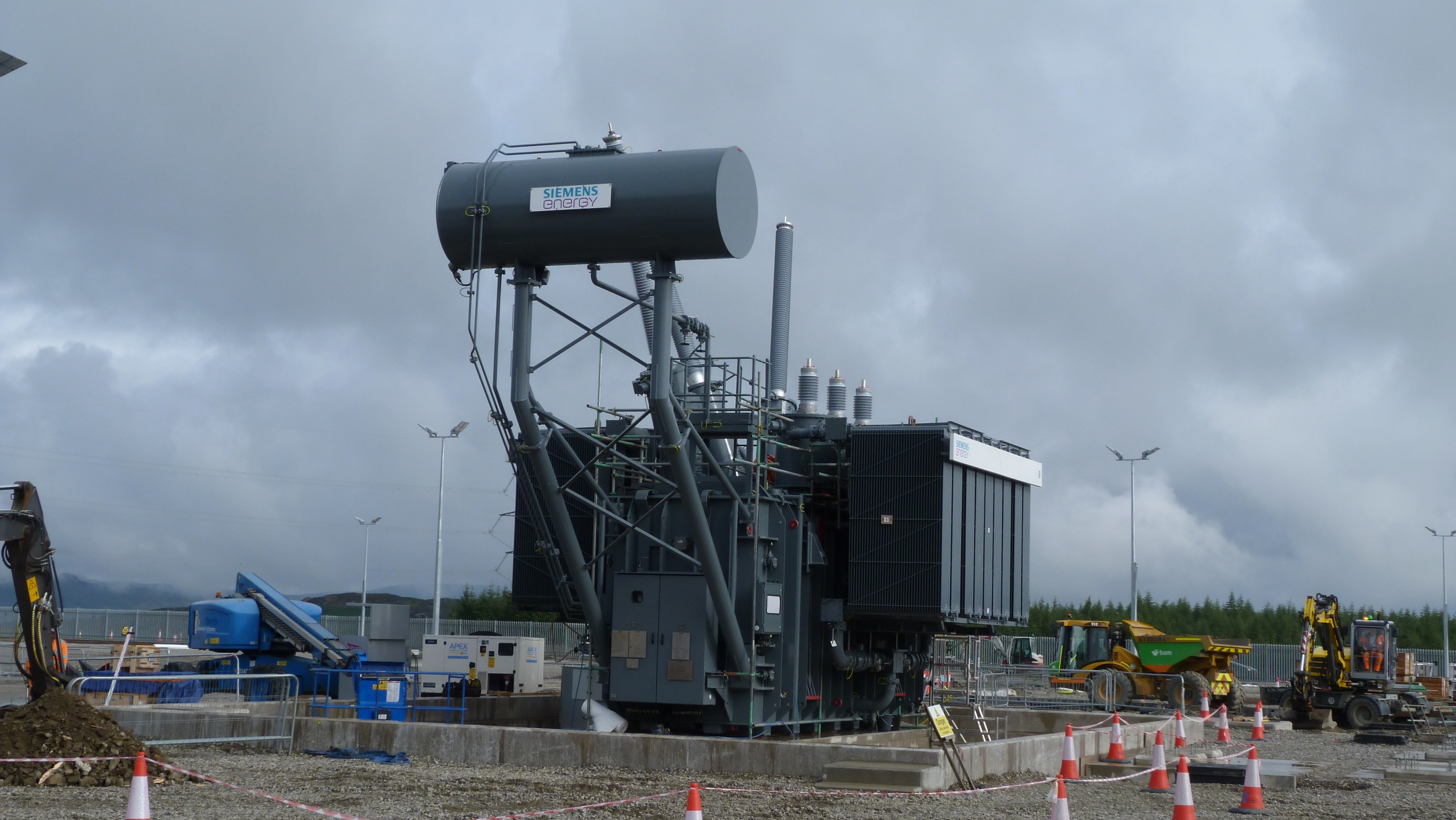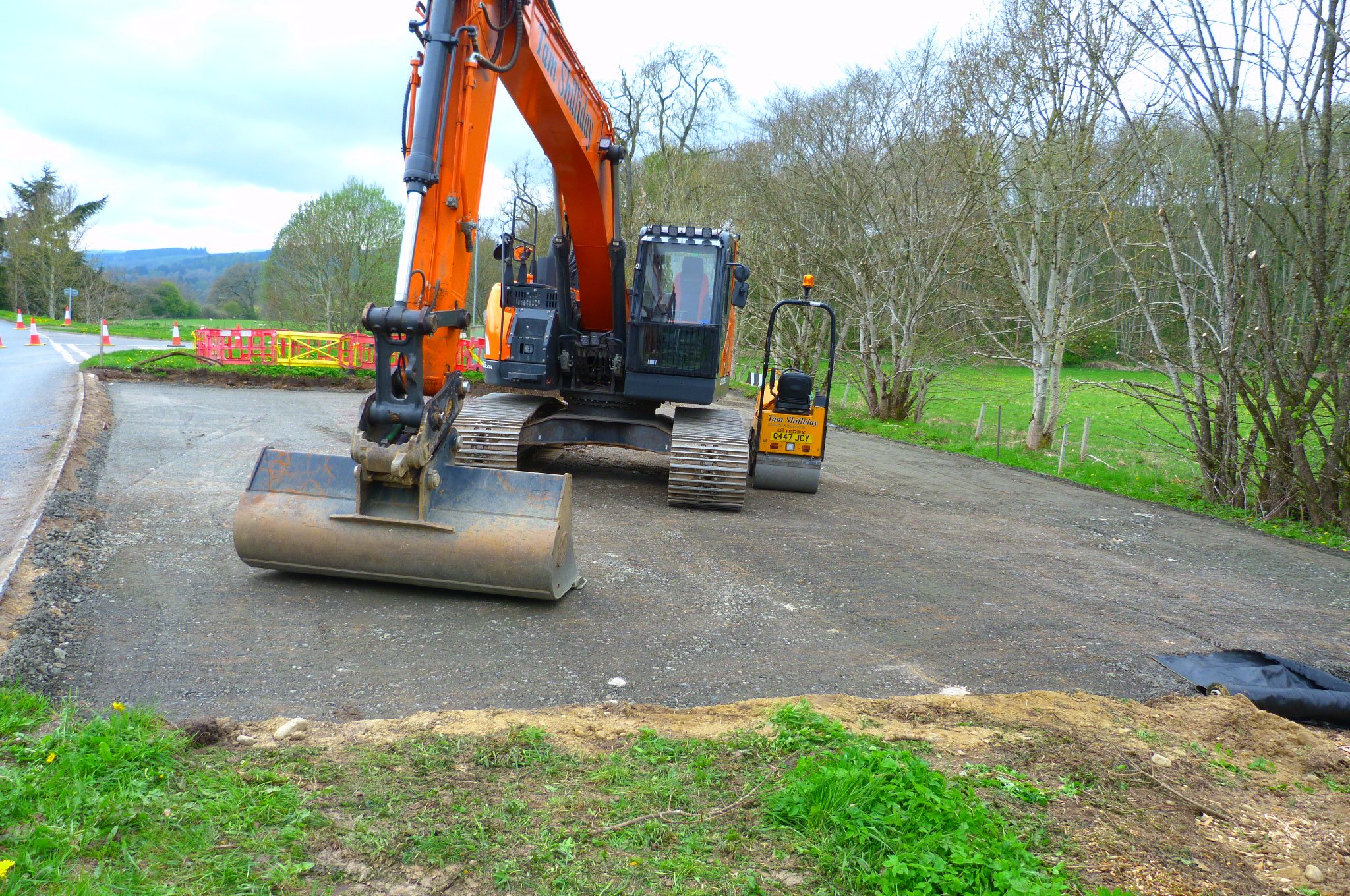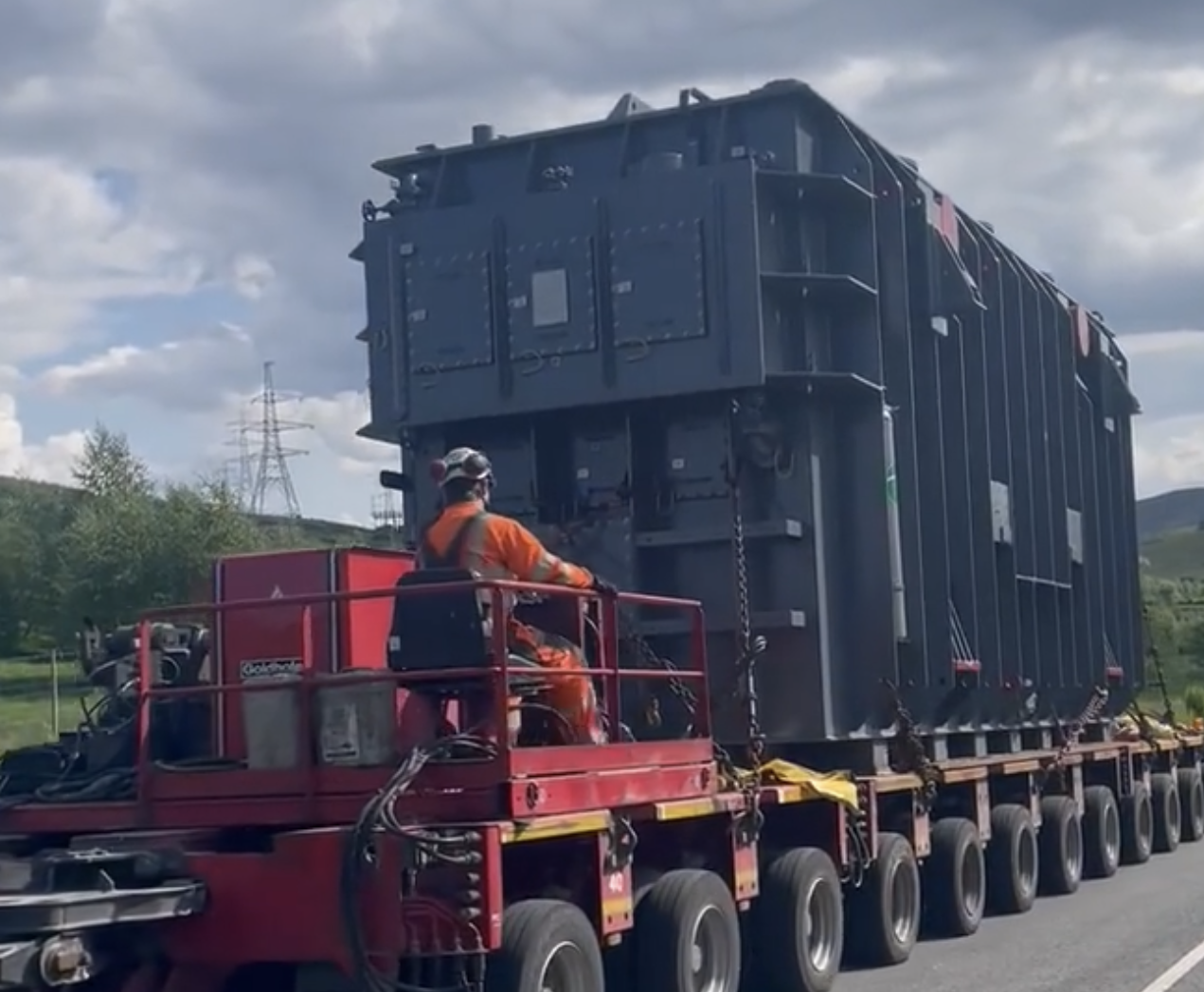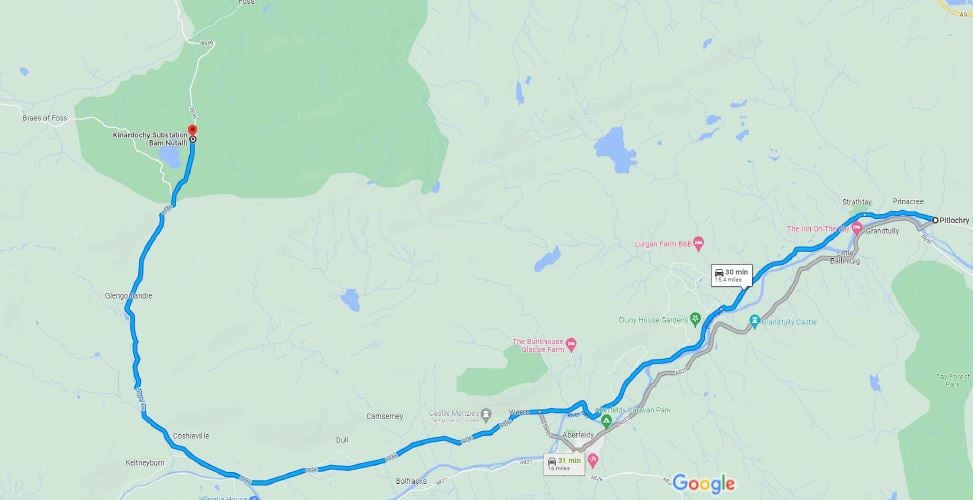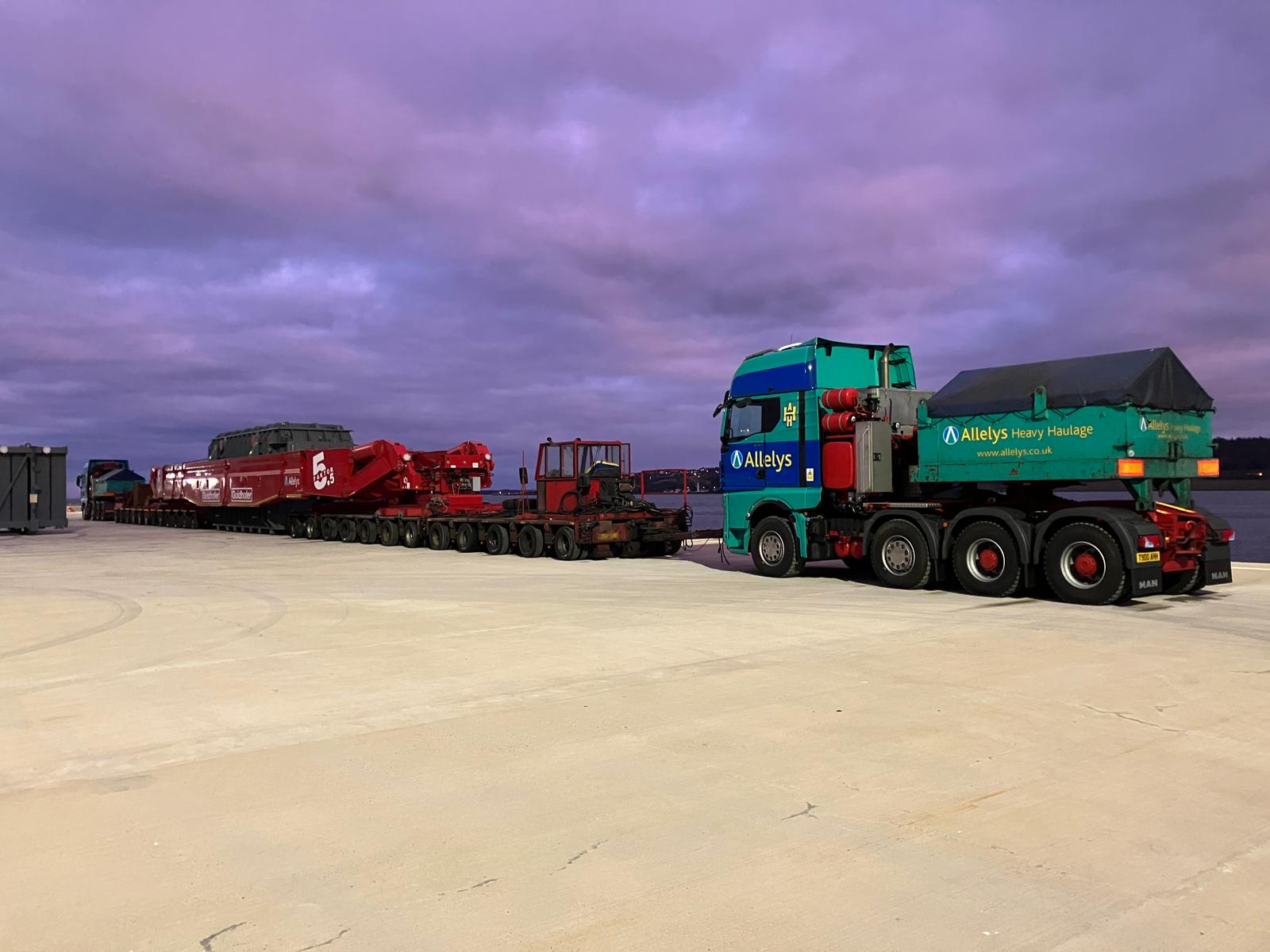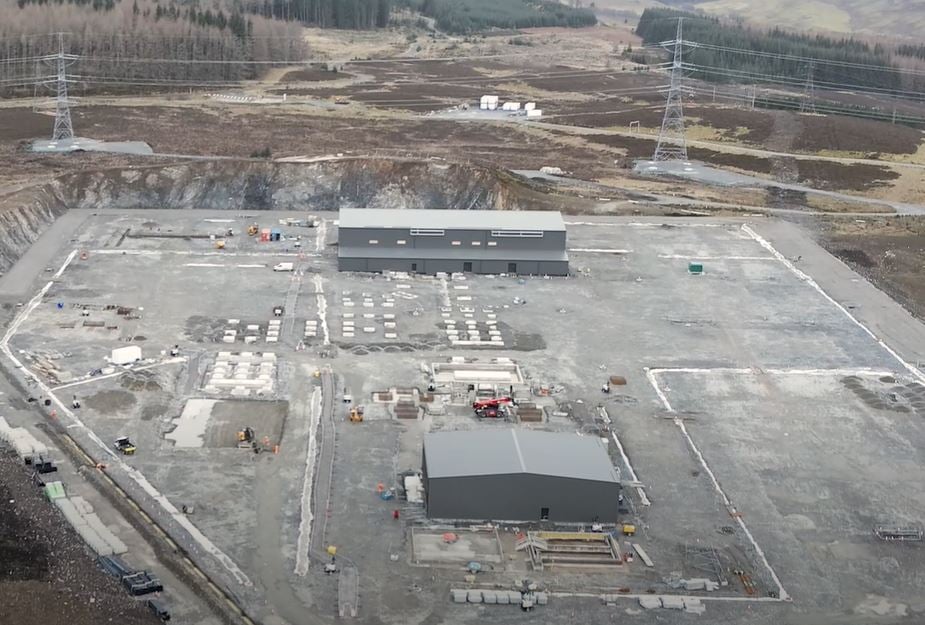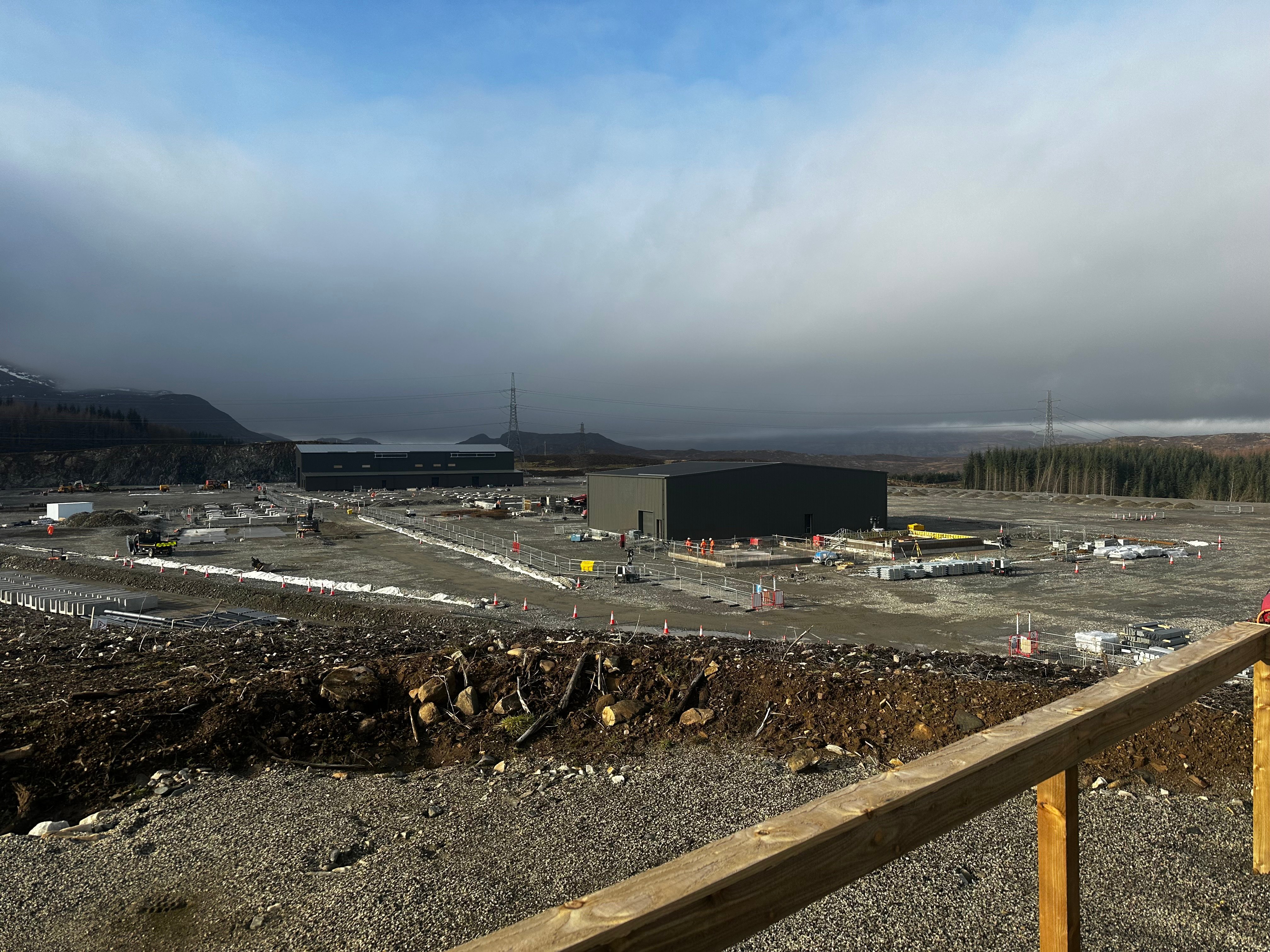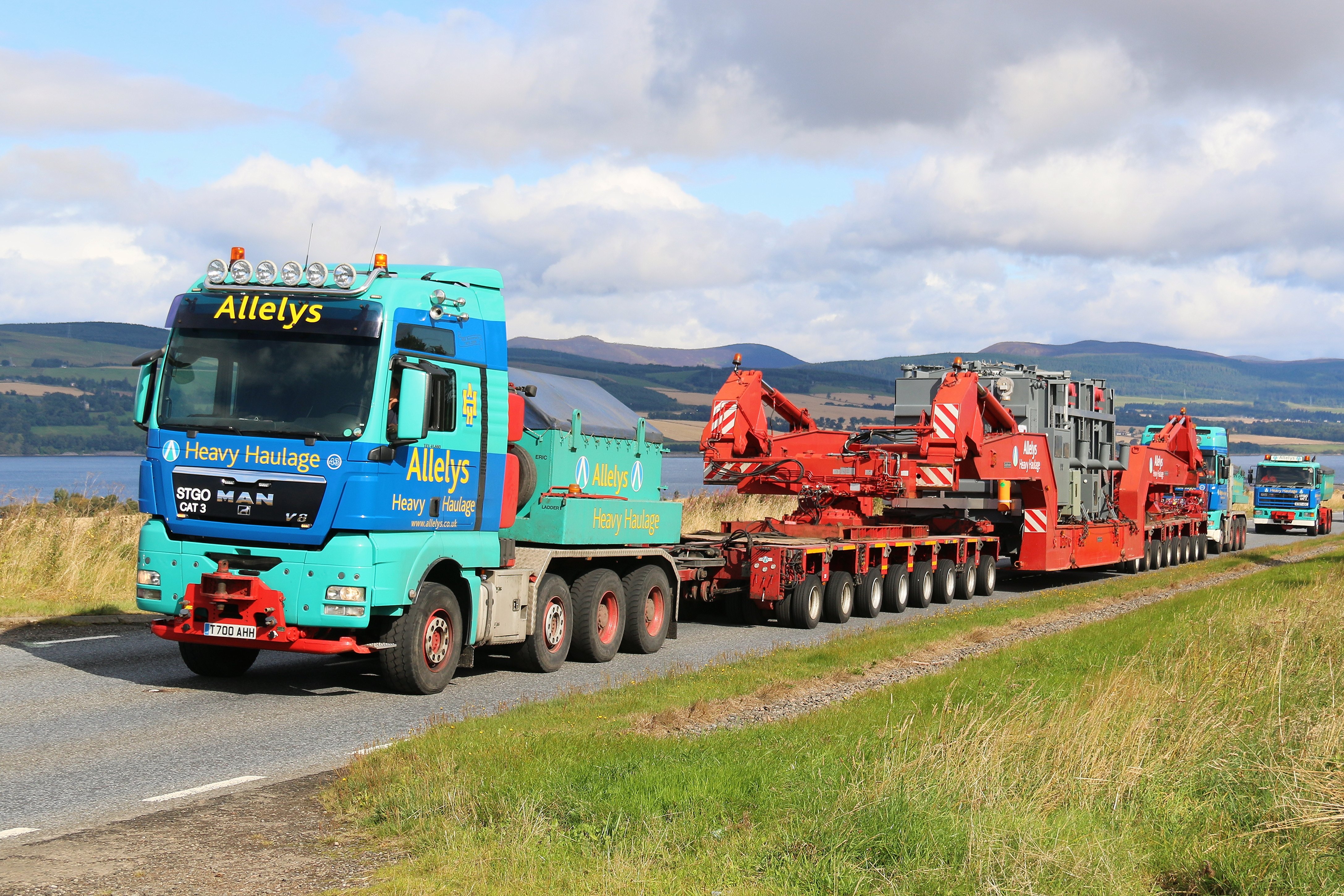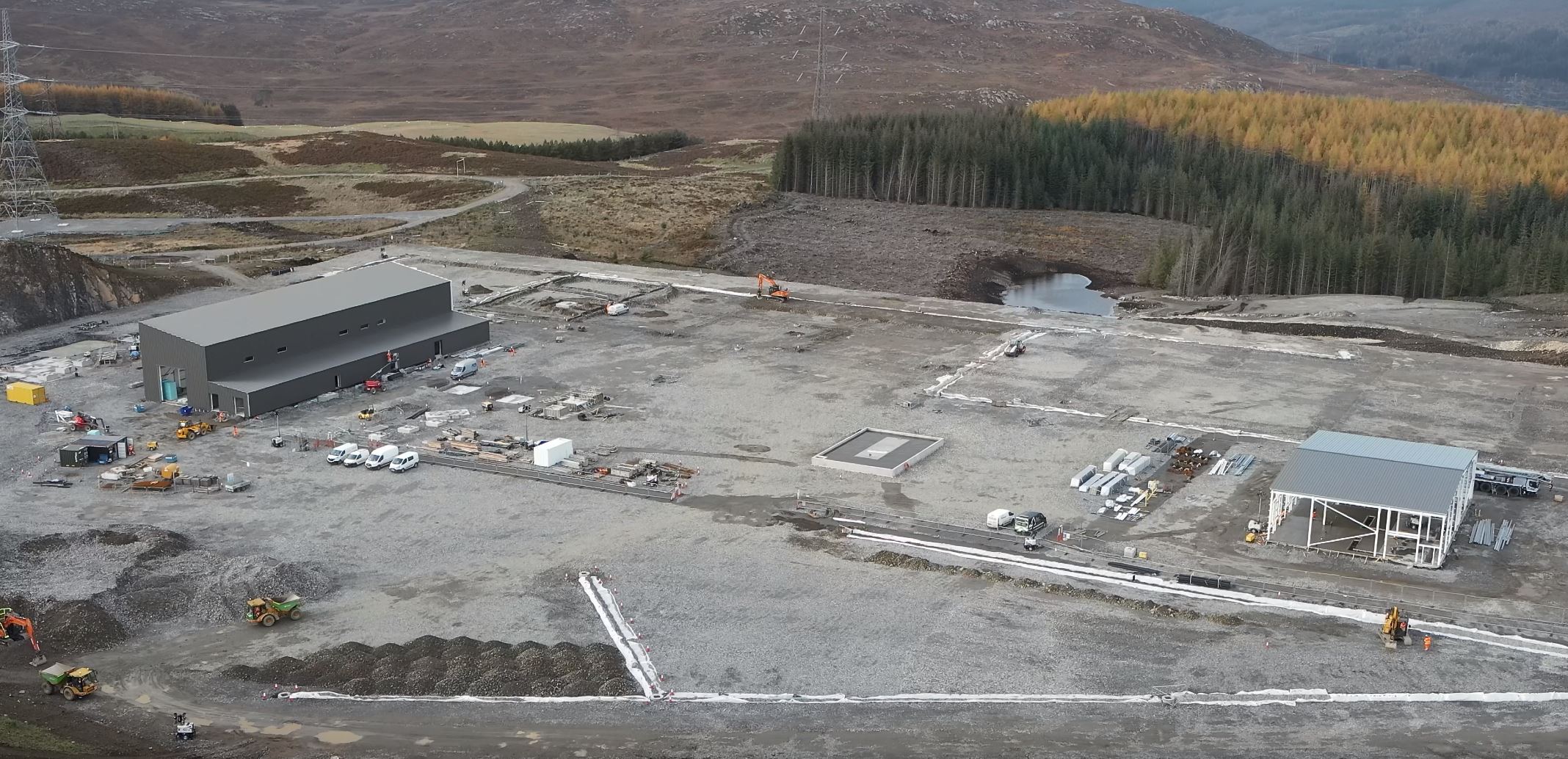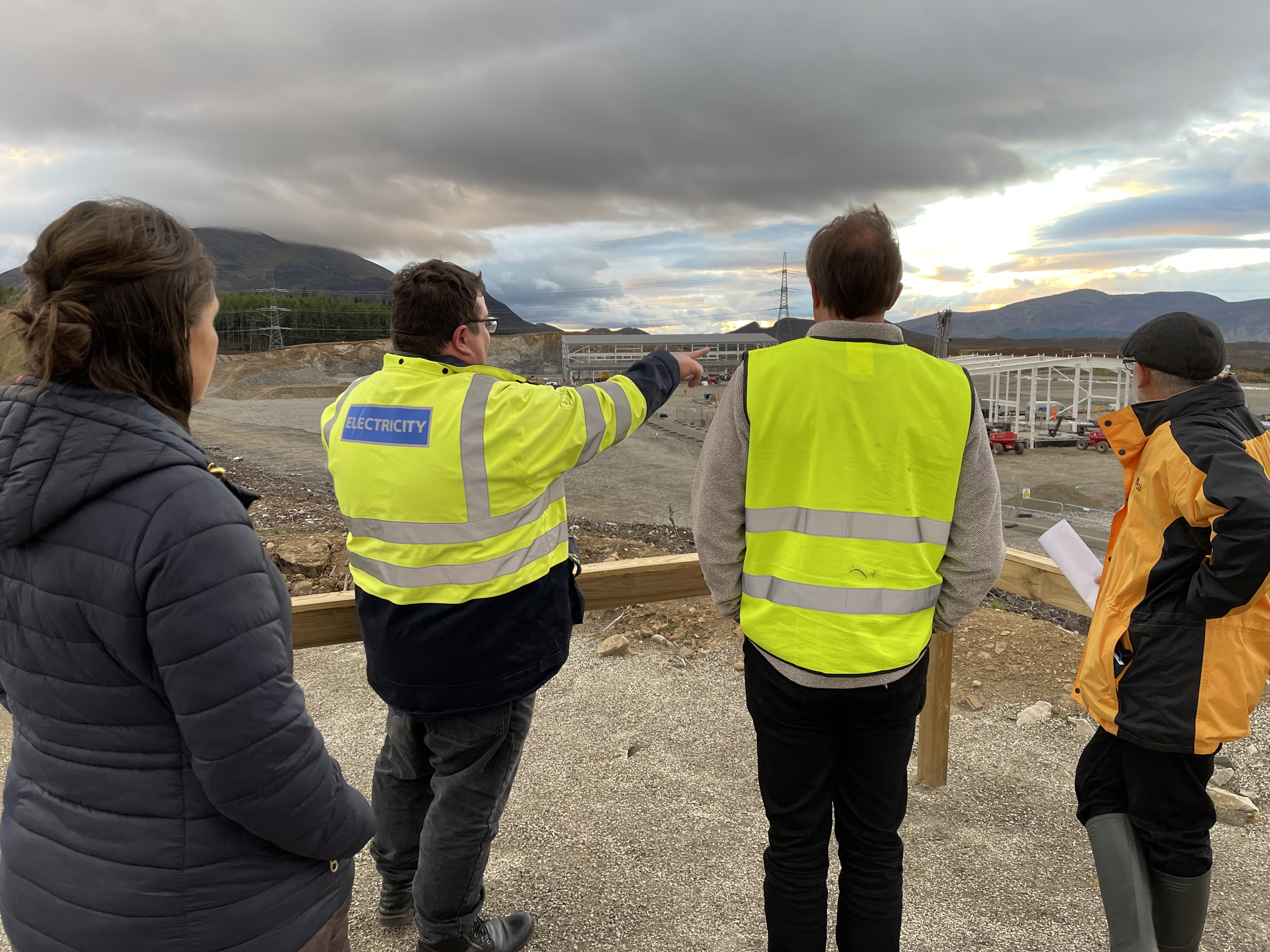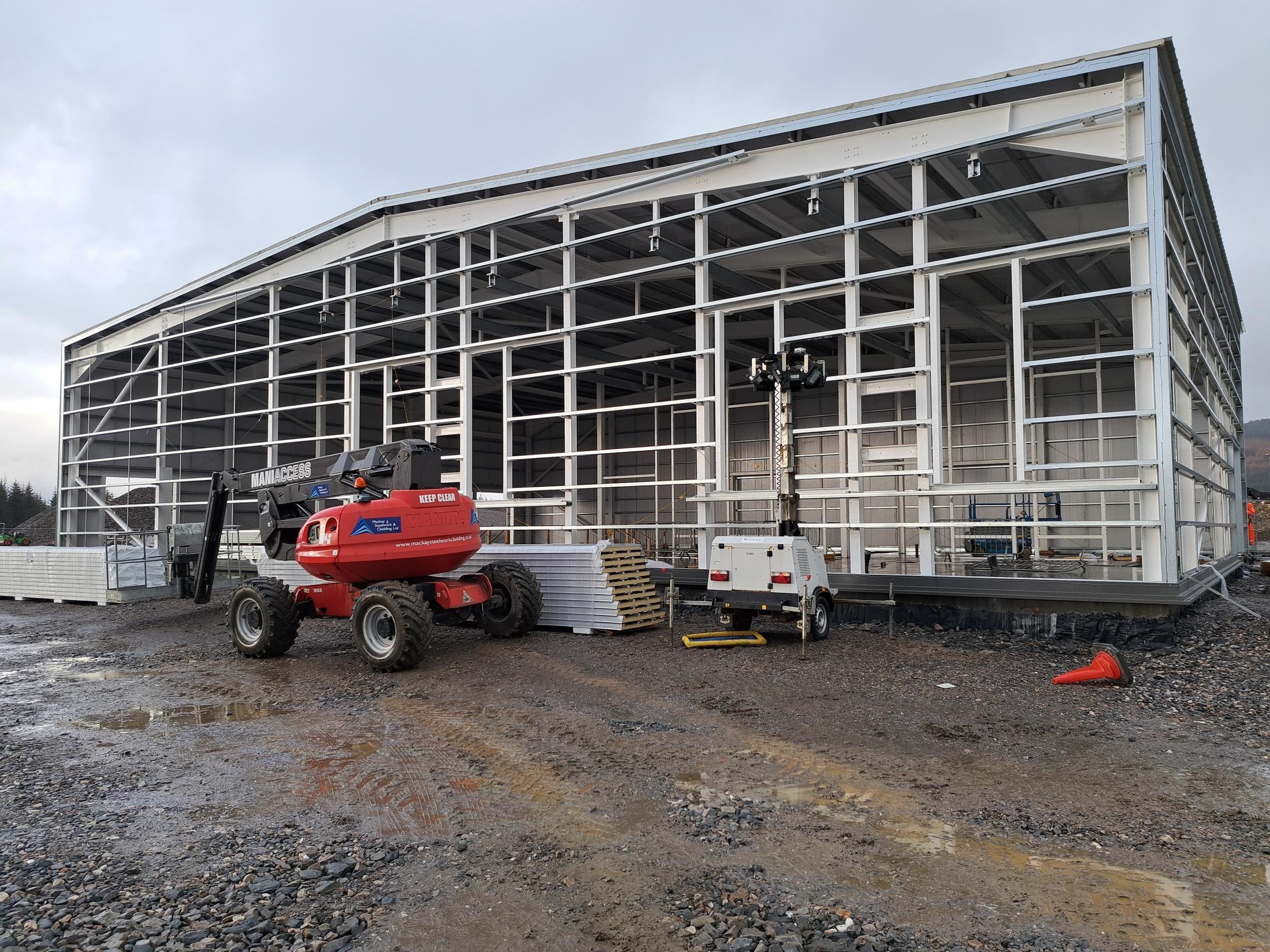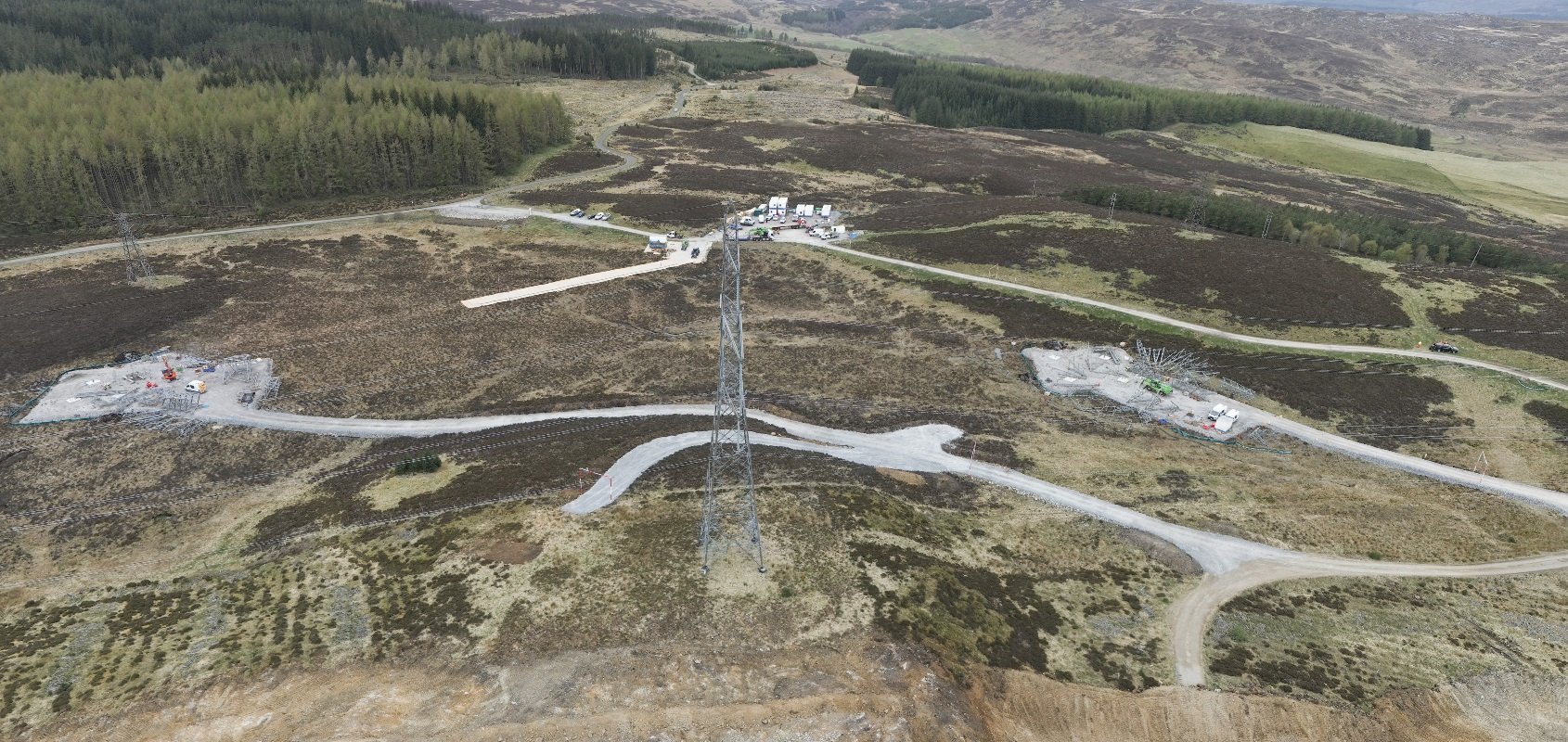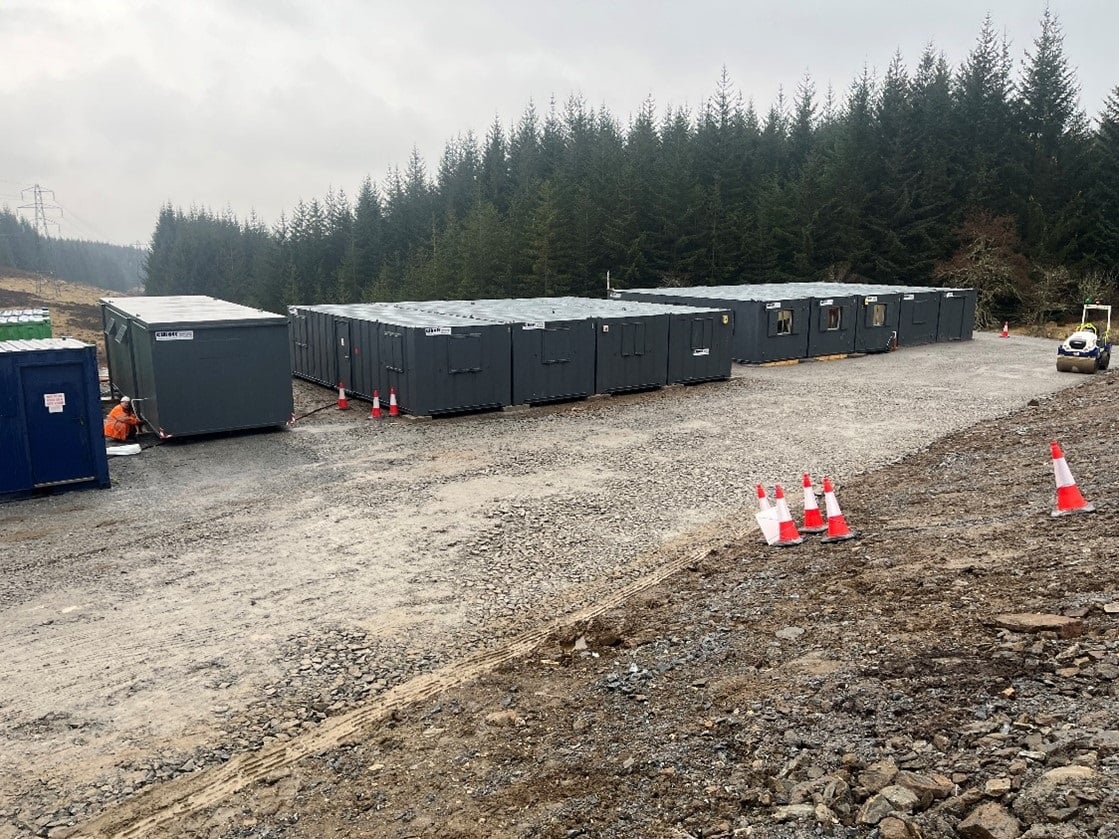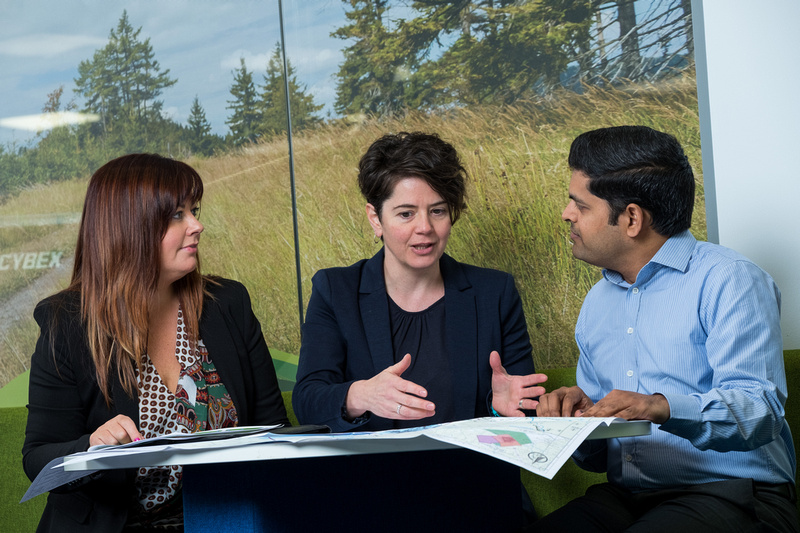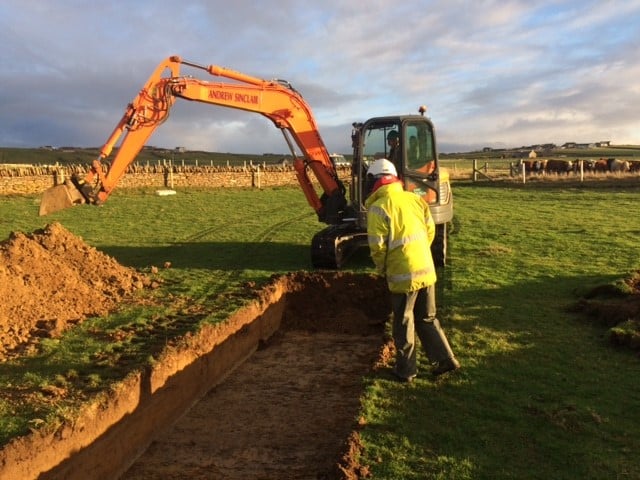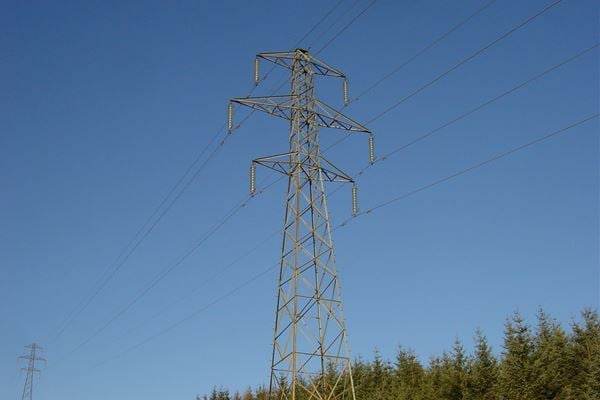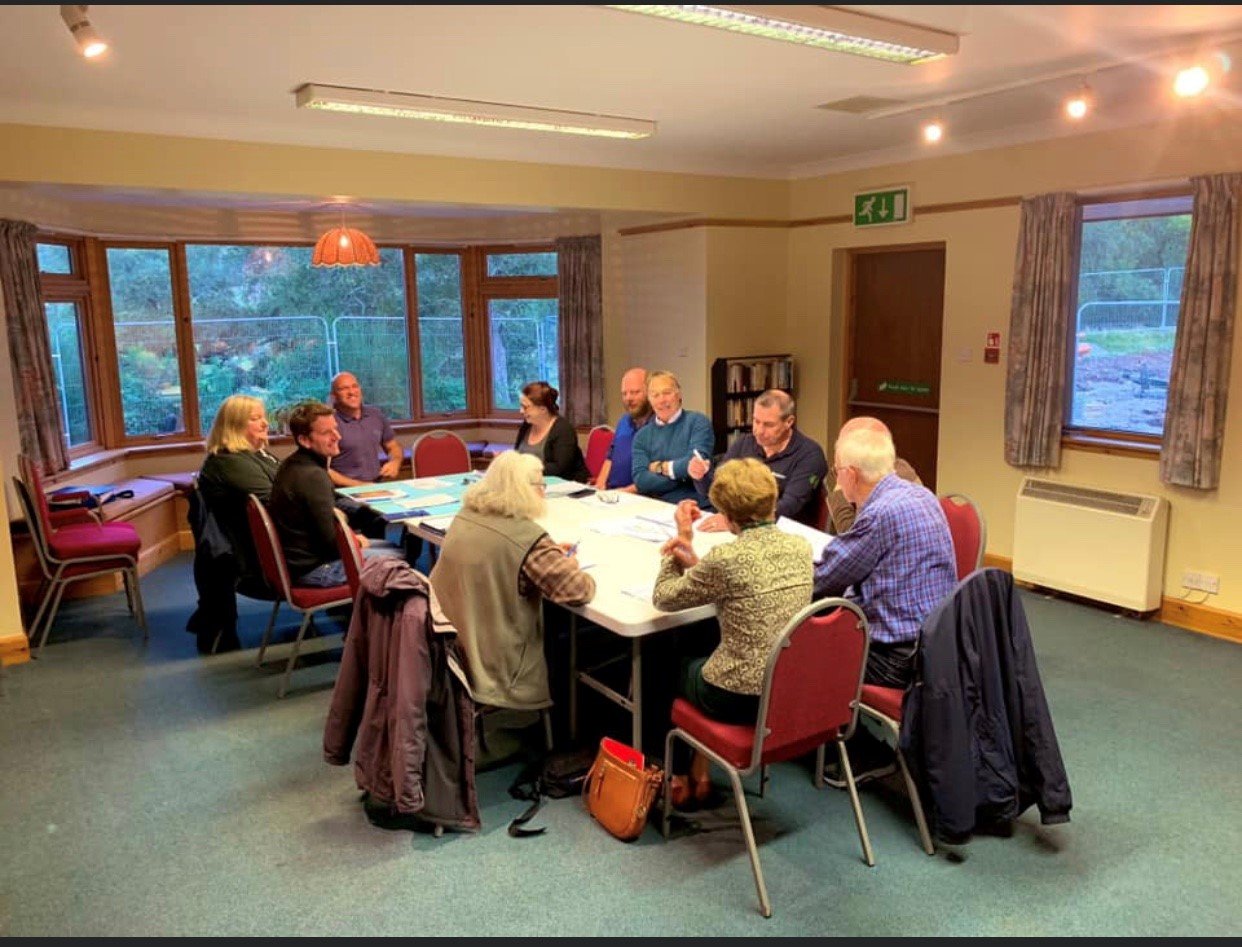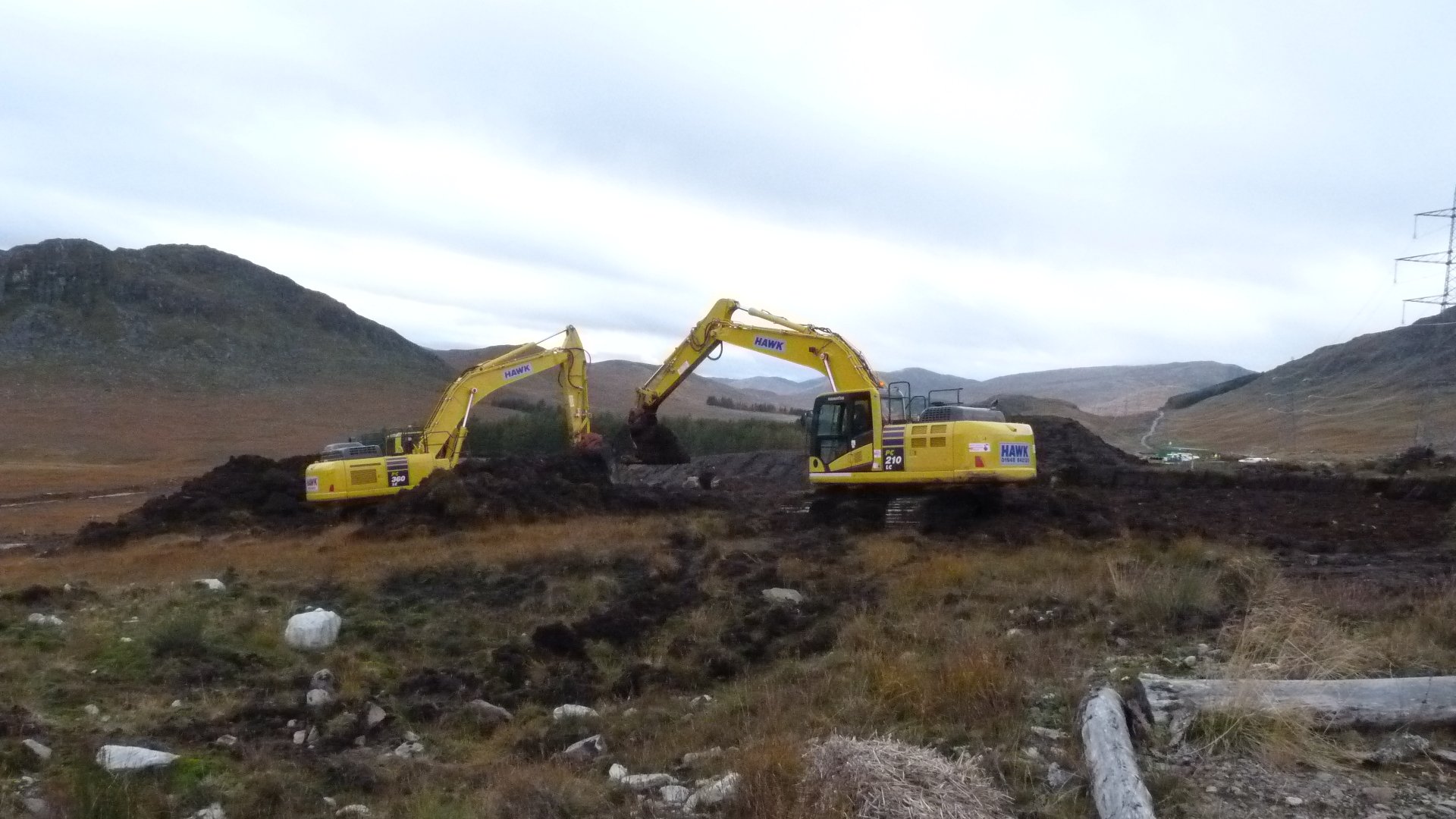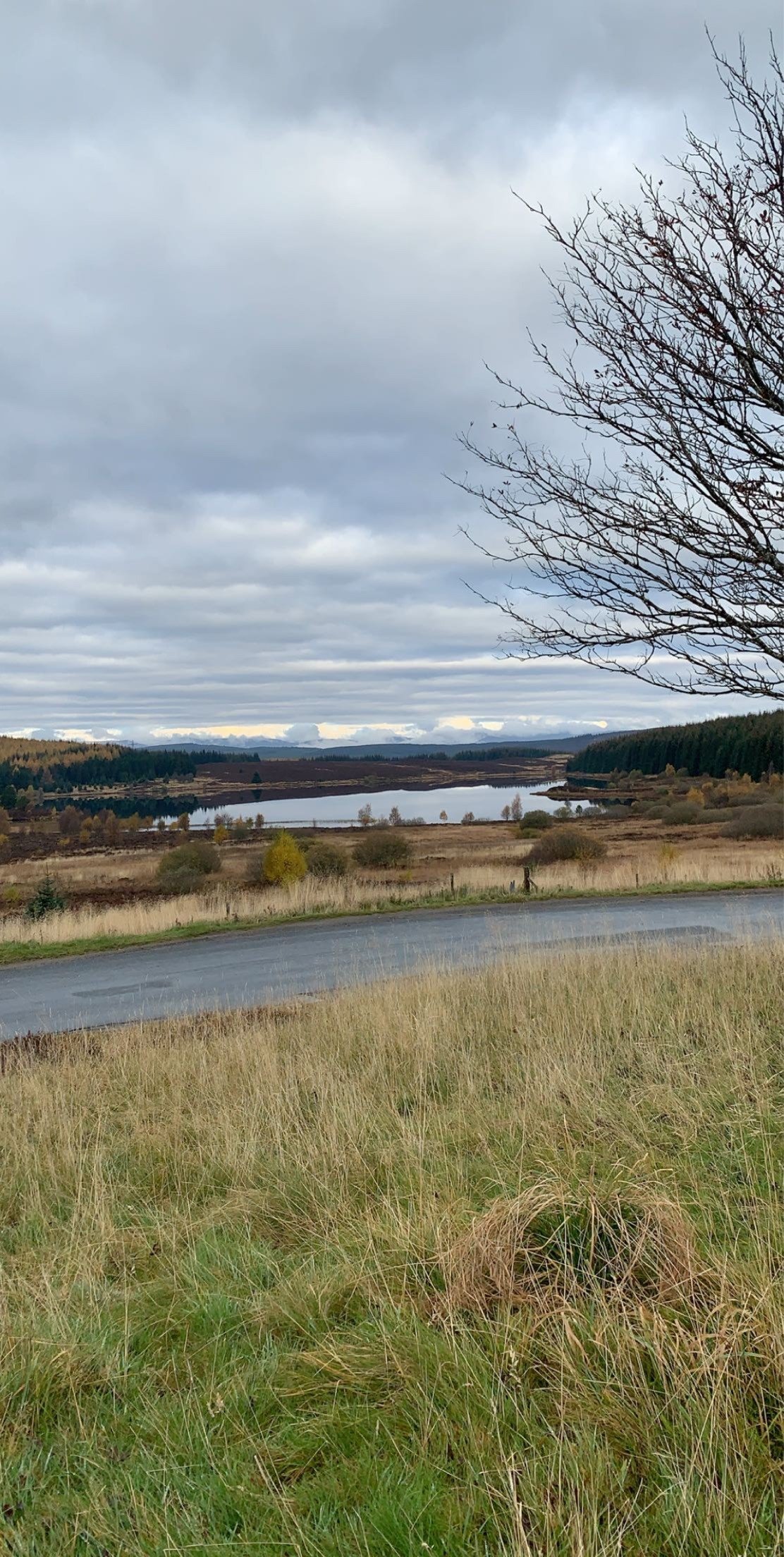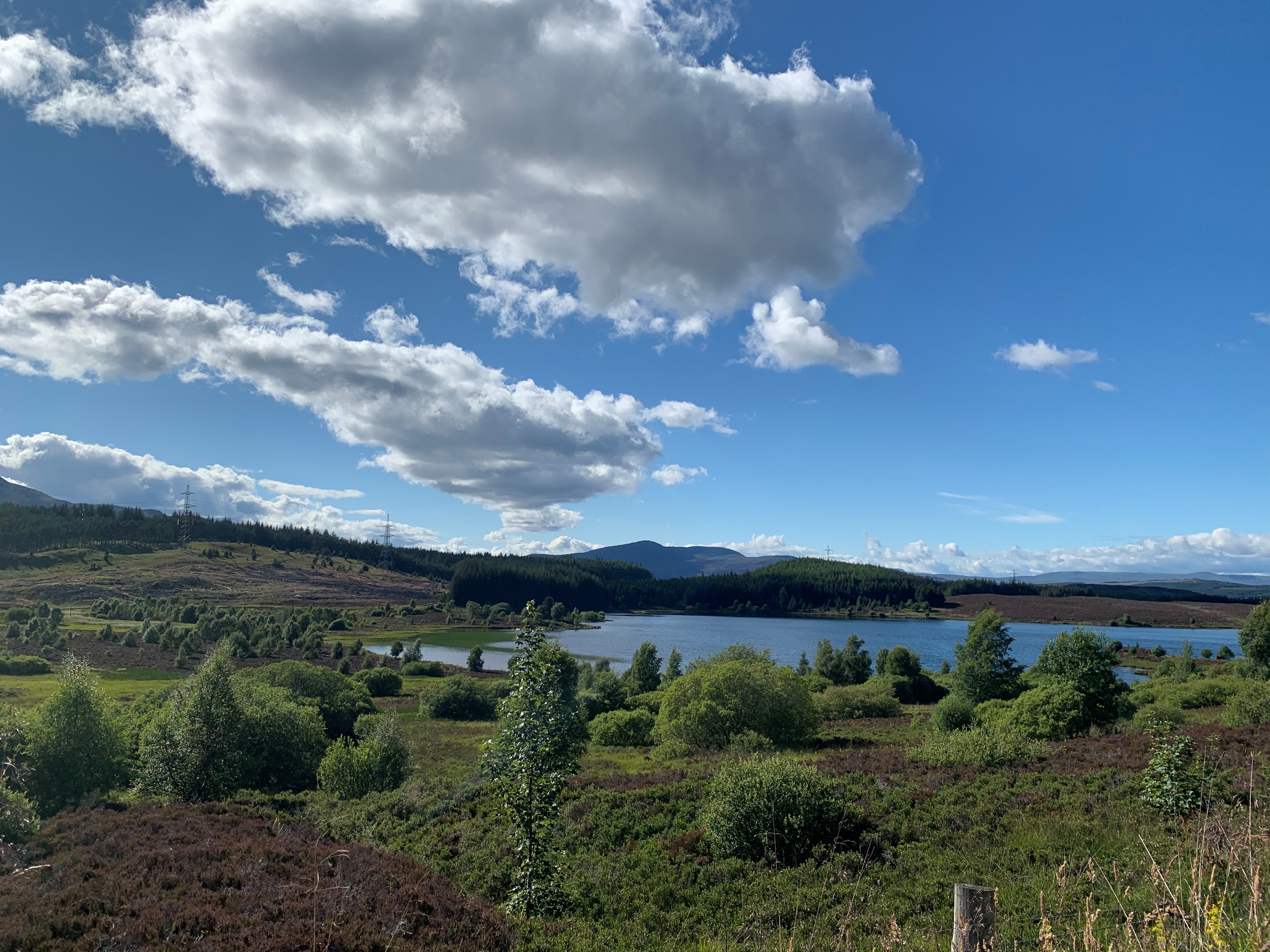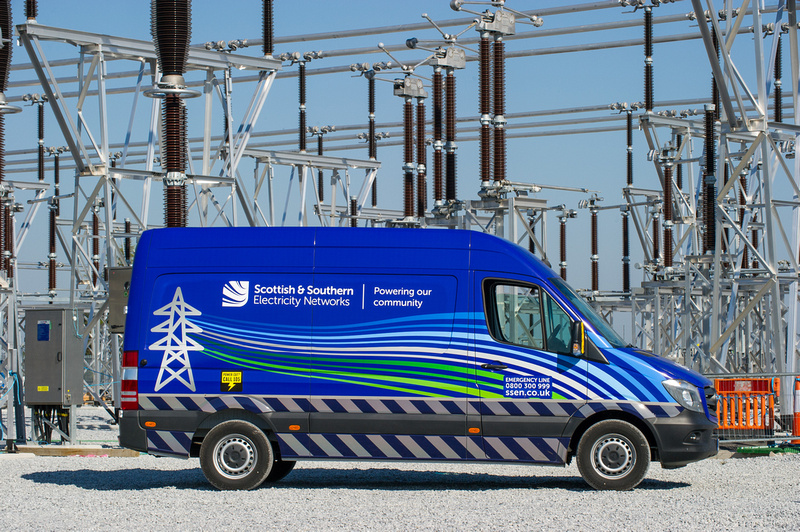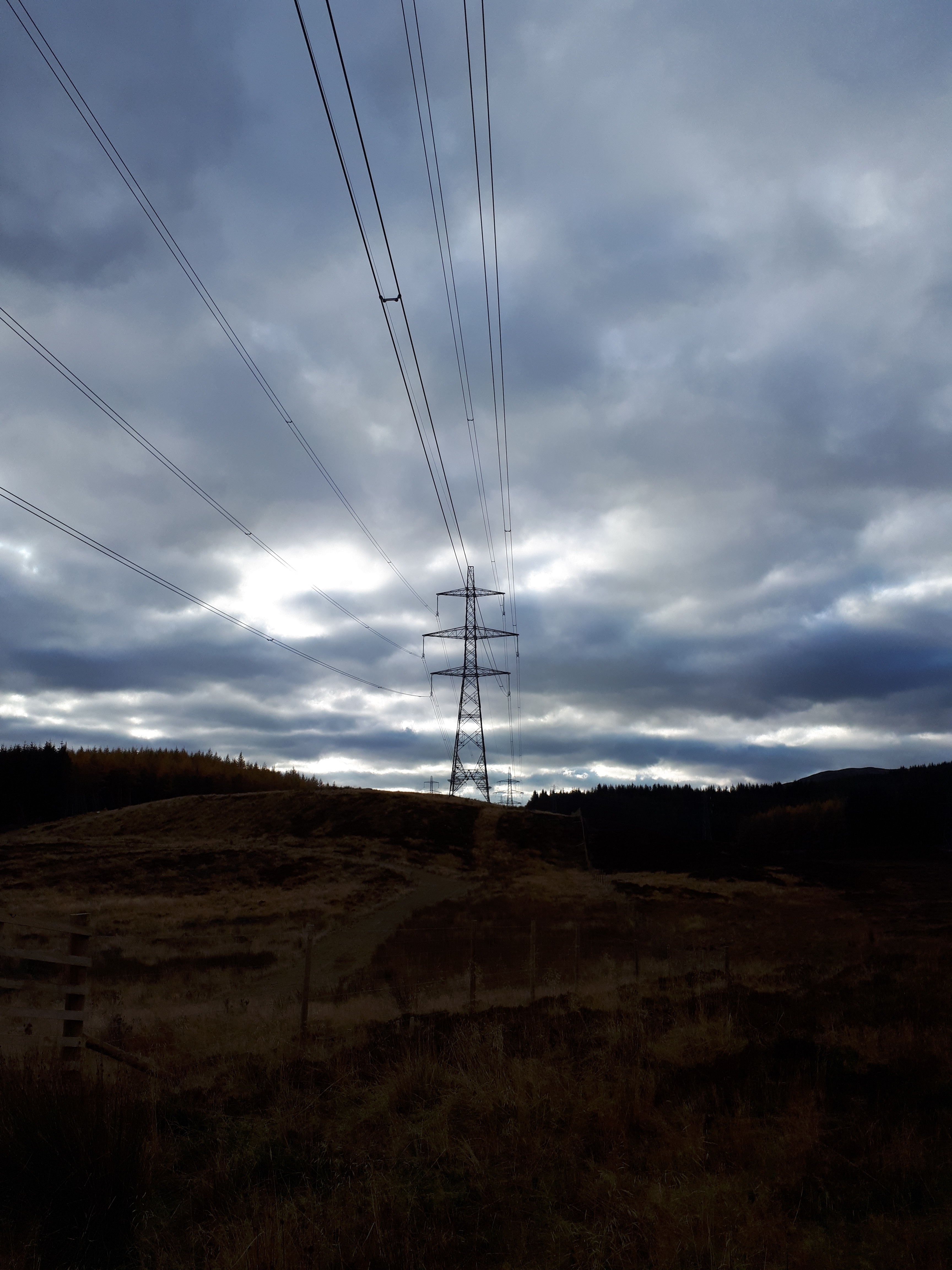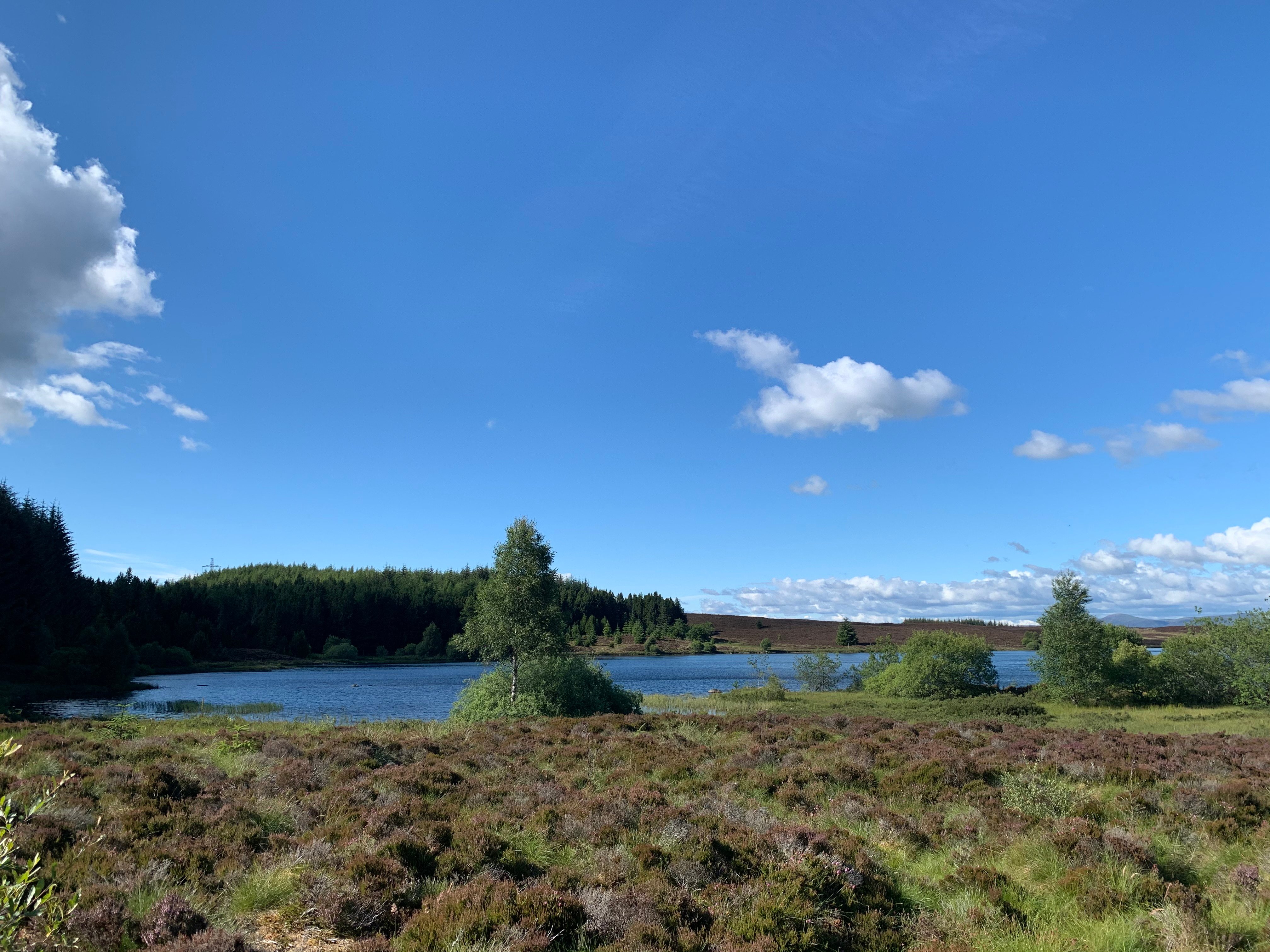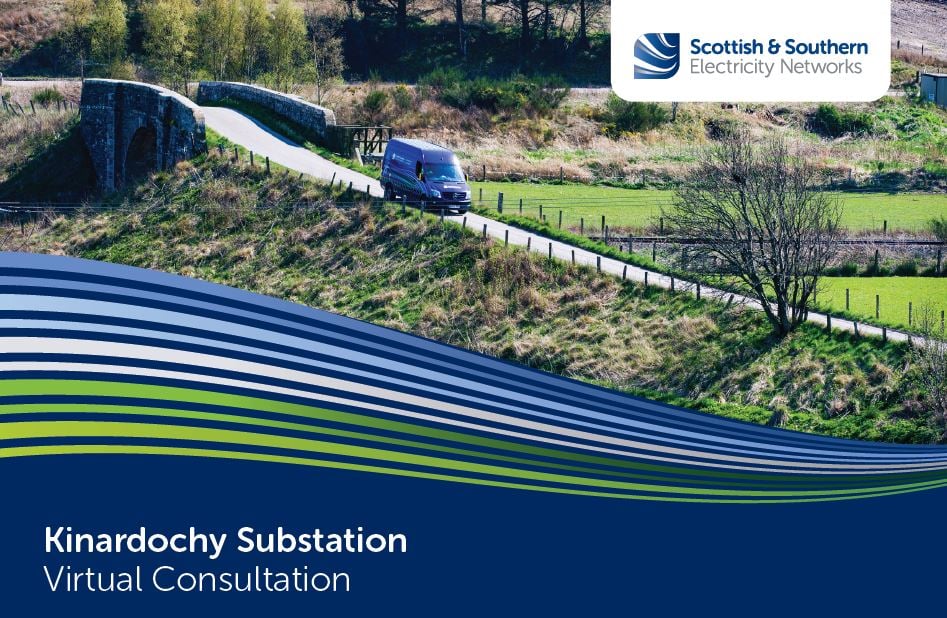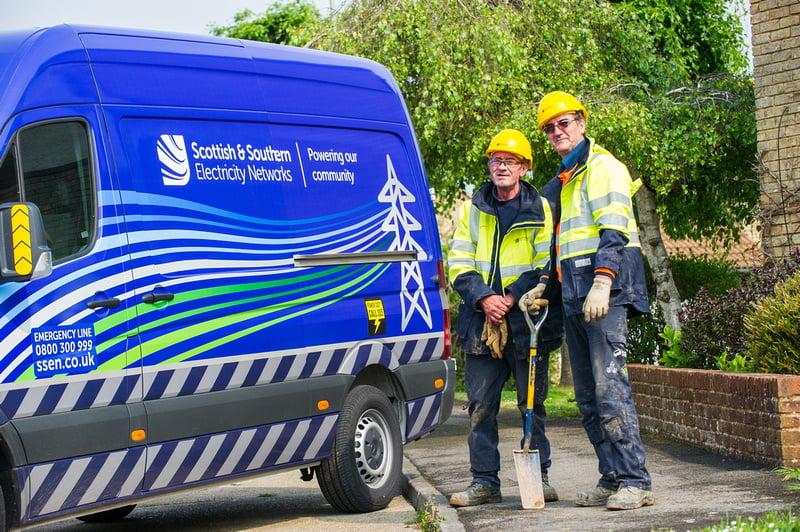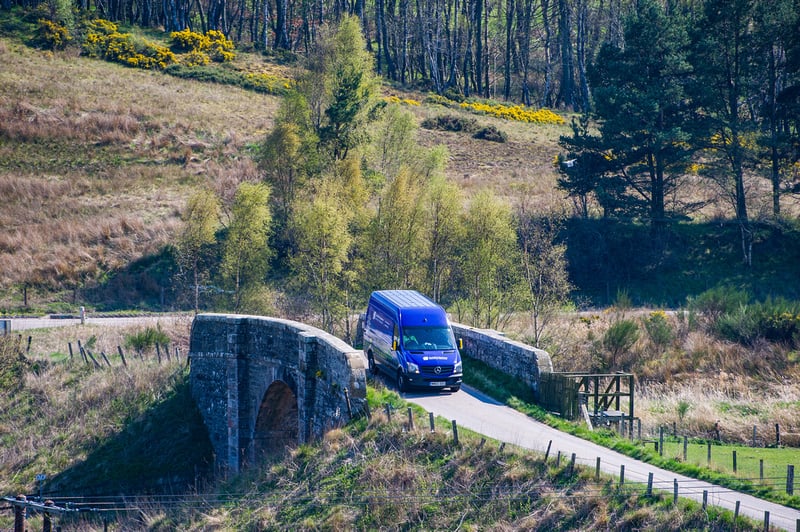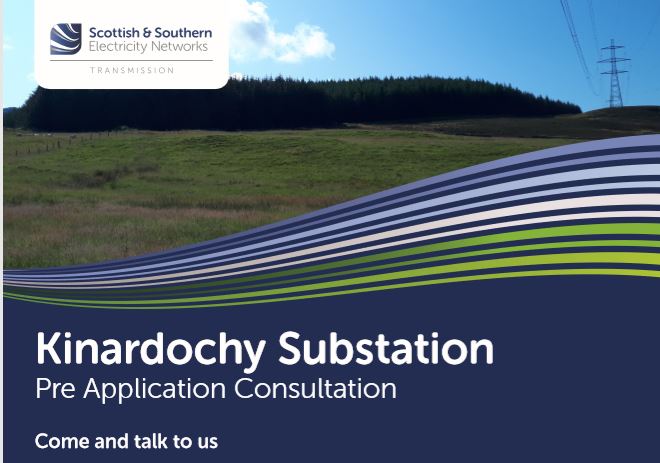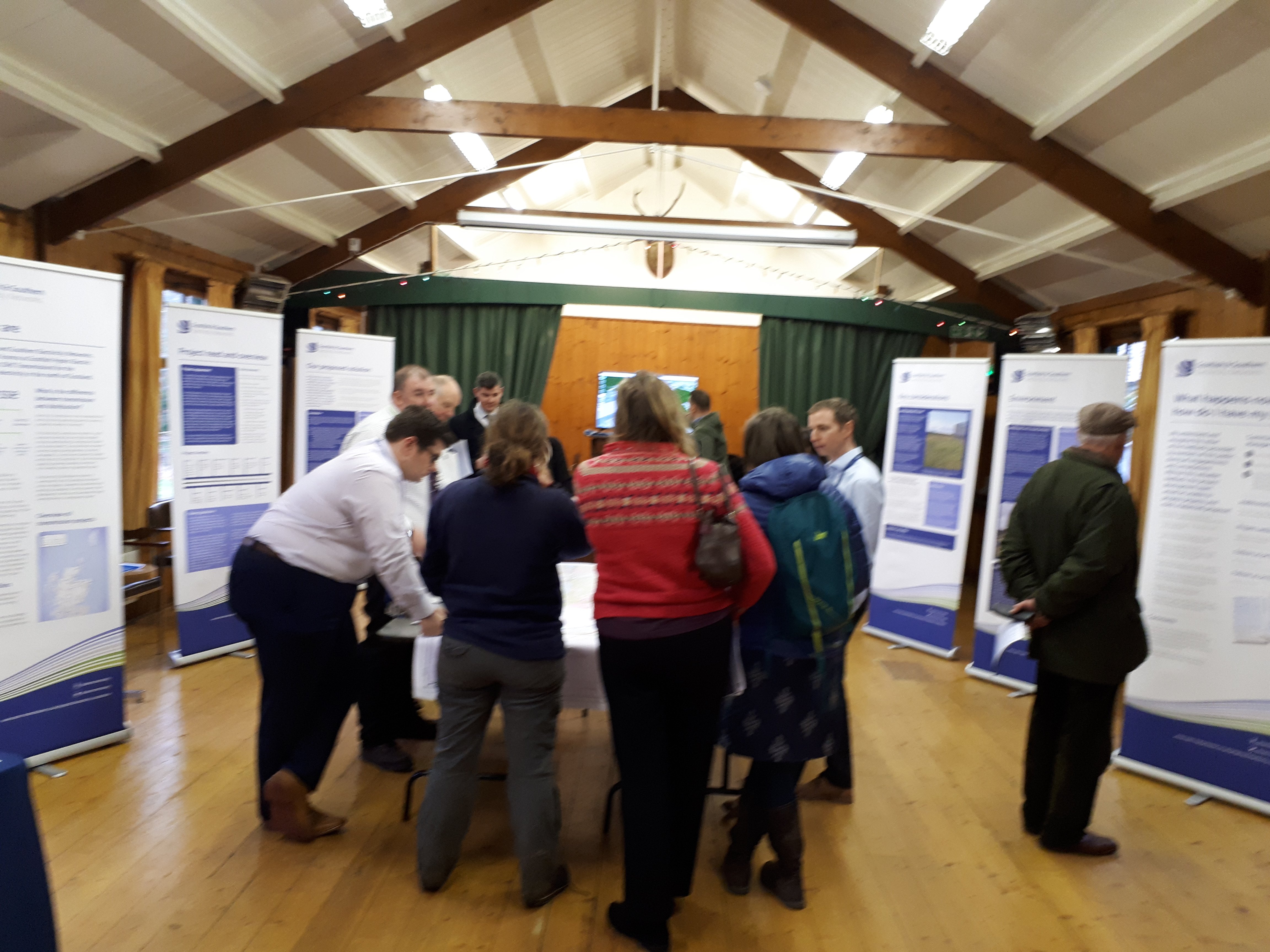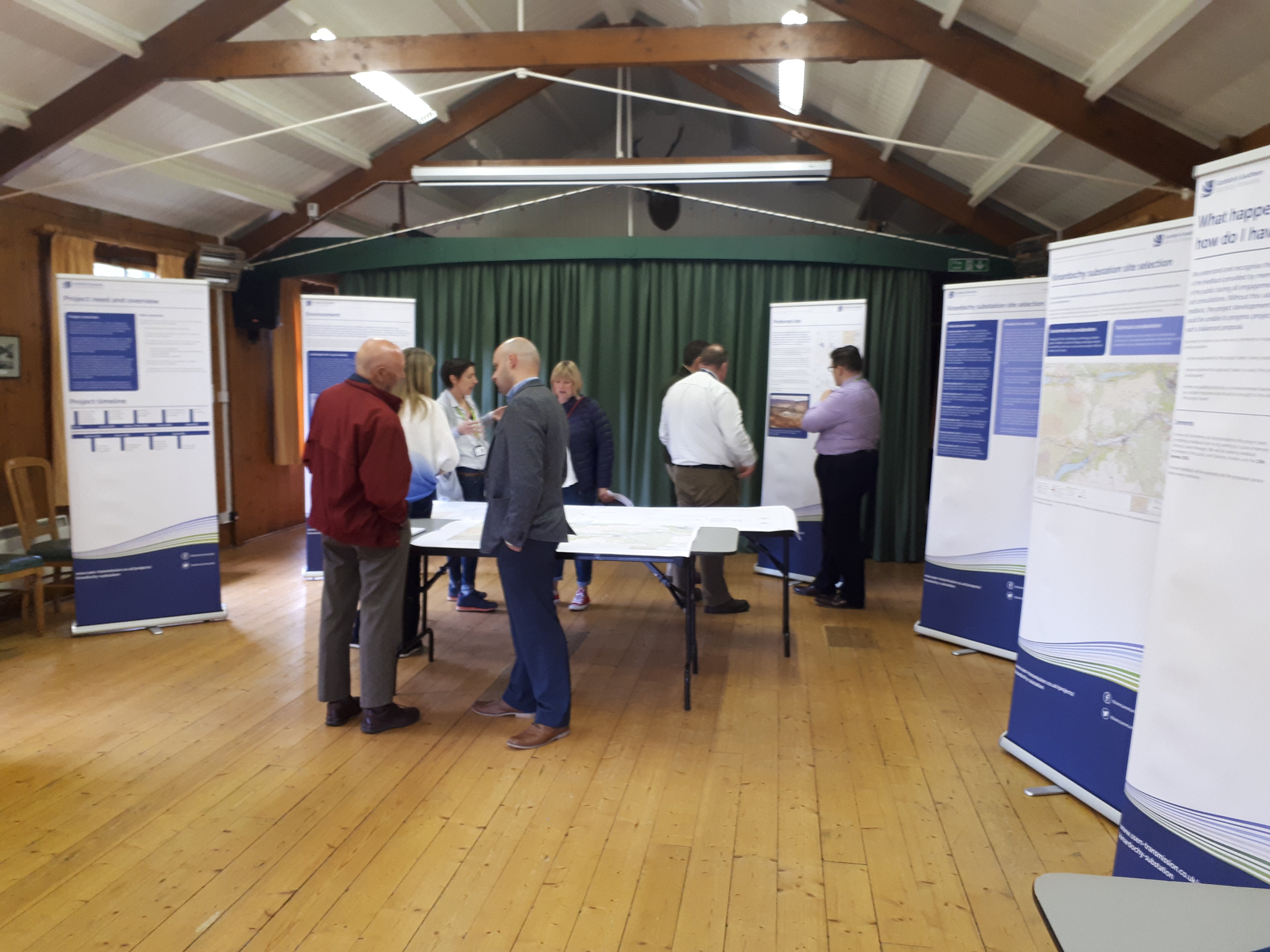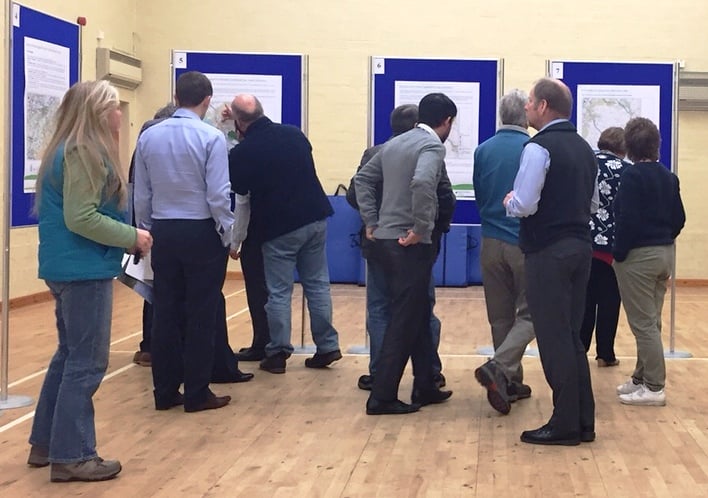Overview
Energisation
After almost 30 months of construction, our new Kinardochy substation in Highland Perthshire which will play a key role in reaching net zero has been energised.
Our project team and Principal Contractor Siemens BAM are celebrating after the substation reached full energisation for the first time in October.
To find out more click here.
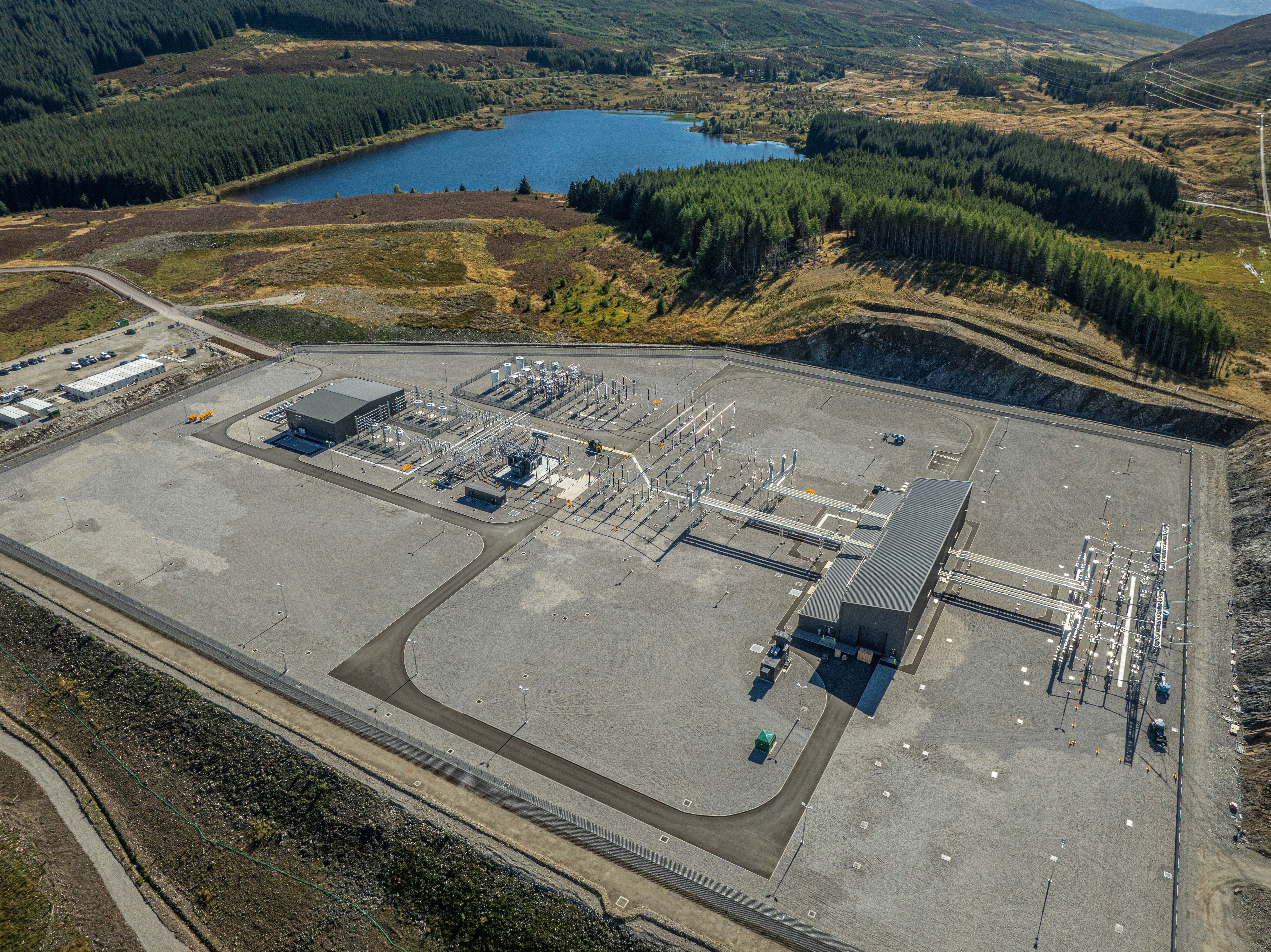
About the Project
The completion of Beauly - Denny 400kV/275kV double-circuit overhead line (OHL) in 2015 has significantly increased the thermal capacity of our network to transfer power through the west corridor.
In addition to the connection of Stronelairg Wind Farm in March 2018, it is expected that the power flowing through Beauly - Denny OHL will increase significantly in the next 10 years due to potential large generation connection in the region.
Power system studies have been conducted considering the current and expected generation, and identified a requirement to manage the power flows to remain compliant with the Security and Quality of Supply Standard (SQSS).
The scope of work will cover the following:
- Design the layout and arrangement for transition of the 275kV Tummel Substation from AIS to GIS with a double-busbar arrangement
- Install one +225/-225MVAr STATCOM and one 100MVAr MSCDN and connect the reactive devices to a double-busbar arrangement
To ensure safe, efficient and coordinated operation of our network, it was proposed that a new reactive power substation is connected at the proposed Kinardochy Substation site.
3D Visualisations of the Project
This video, which has been designed by specialist company 3DW, allows viewers to see what the Kinardochy Substation project will look like when complete.
We are keen to hear your views on the 3D models and you can send your feedback to the Community Liaison Manager at the bottom of this page.
B846 Fly-Past
This video shows a visualisation of the substation when travelling along the B846, alongside an aerial view from the road.
Why is the Project Required?
As part of our statutory and transmission licence obligations, we have a number of duties including:
- the development and maintenance of an efficient, coordinated and economical system of electricity transmission
- to facilitate competition in the supply and generation of electricity
- to ensure that the security of the network is maintained as the demand and/or generation connections change over time
We also have a statutory duty under the Electricity Safety, Quality and Continuity Regulations 2002 to ensure that the electricity transmission network is fit for purpose.
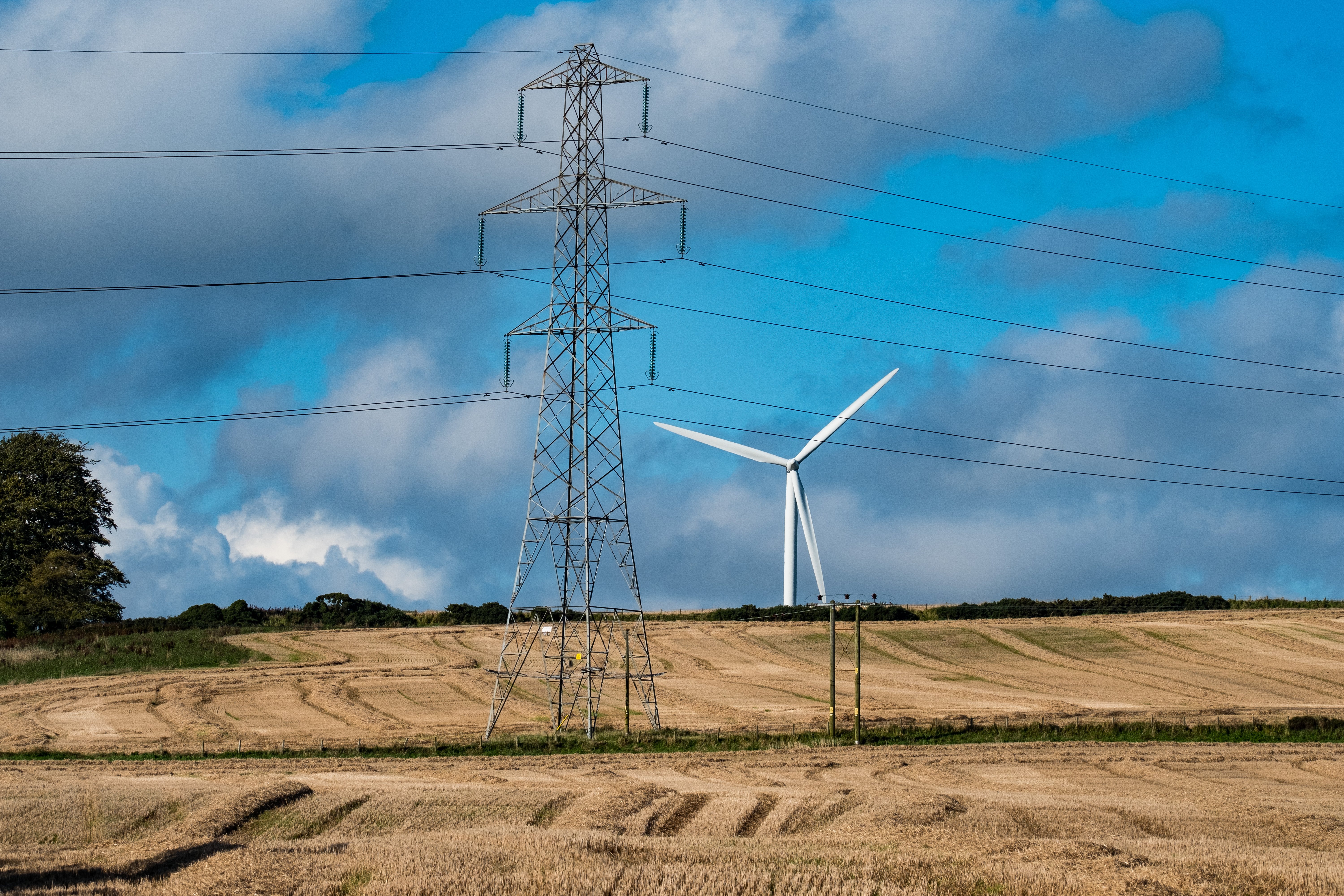
Community Engagement
Throughout the life of our projects, we aim to work positively with local communities and keep people informed about what we are doing. This is particularly important when we are developing a proposal and we want to understand what local people think about our plans.
We endeavour to take the time to discuss proposals with local community councils, encourage engagement from the wider community and listen to the feedback we receive.
We will do our best to answer any questions and address issues or concerns that are raised with us.
When our project progresses into construction, we will continue working closely with the local community to ensure that our work has as little impact on the lives of those living and working in the area and as many long term positive effects as possible.
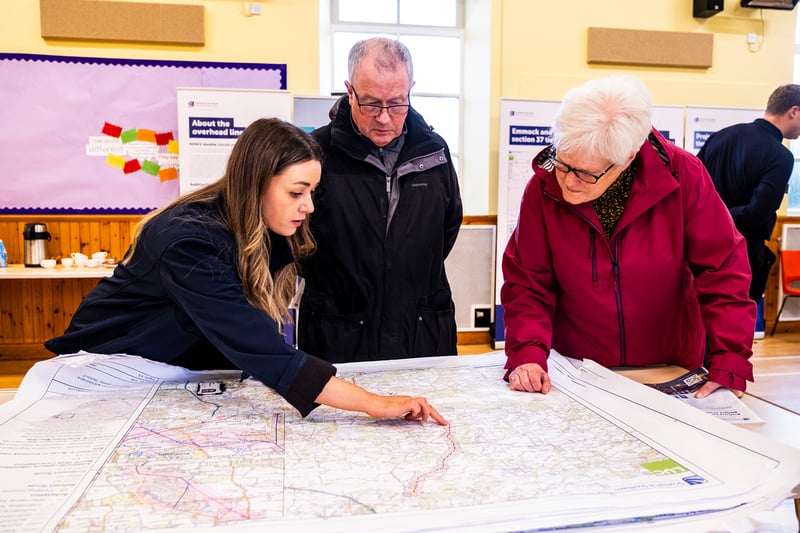
How we’re embracing artificial intelligence (AI)
We intend to use AI to assist our experienced teams in the analysis of your feedback, so we can categorise key points raised more quickly. You can learn more about how we’re utilising AI on this dedicated web page.
Project Updates
Featured updates
Featured updates for this project

Demobilisation
Project updates
Documents
Project Newsletter
-
November 2024 Newsletter
- Type:
- Date:
- 04 November 2024
- Size:
- 1.8 MB
This newsletter from November 2024 provides project updates, key dates and information on planned activities in the area.
-
August 2024 Newsletter
- Type:
- Date:
- 02 August 2024
- Size:
- 1.2 MB
This newsletter from August 2024 provides project updates, key dates and information on planned activities in the area.
-
March 2024 Newsletter
- Type:
- Date:
- 01 March 2024
- Size:
- 1 MB
This newsletter from March 2024 provides project updates, key dates and information on planned activities in the area.
-
December 2023 Newsletter
- Type:
- Date:
- 12 December 2023
- Size:
- 945.1 KB
This newsletter from December 2023 provides project updates, key dates and information on planned activities in the area.
-
September 2023 newsletter
- Type:
- Date:
- 01 August 2023
- Size:
- 15.3 MB
This newsletter from September 2023 provides project updates, key dates and information on planned activities in the area.
-
June 2023 newsletter
- Type:
- Date:
- 01 June 2023
- Size:
- 1006.5 KB
This newsletter from June 2023 provides project updates, key dates and information on planned activities in the area.
-
March 2023 newlsetter
- Type:
- Date:
- 01 March 2023
- Size:
- 1.2 MB
This newsletter from March 2023 provides project updates, key dates and information on planned activities in the area.
-
December 2022 newsletter
- Type:
- Date:
- 01 December 2022
- Size:
- 1 MB
This newsletter from December 2022 provides project updates, key dates and information on planned activities in the area.
-
October 2022 newsletter
- Type:
- Date:
- 30 September 2022
- Size:
- 902.2 KB
This newsletter from October 2022 provides project updates, key dates and information on planned activities in the area.
Community Liaison Group Meeting Minutes
-
3rd CLG Meeting Minutes
- Type:
- Date:
- 06 October 2022
- Size:
- 227.3 KB
-
2nd CLG Meeting Minutes
- Type:
- Date:
- 18 May 2022
- Size:
- 218.8 KB
-
Inaugural CLG Meeting Minutes
- Type:
- Date:
- 07 March 2022
- Size:
- 250.1 KB
-
Kinardochy substation CLG terms of reference
- Type:
- Date:
- 07 March 2022
- Size:
- 291.4 KB
Project Documents
-
Transhipment Area Traffic Management
- Type:
- Date:
- 11 August 2023
- Size:
- 243.3 KB
-
Transhipment Area Platform Works.pdf
- Type:
- Date:
- 19 April 2023
- Size:
- 547.4 KB
-
Verge Road Widening Works.pdf
- Type:
- Date:
- 19 April 2023
- Size:
- 175.3 KB
-
B846 Aberfeldy to Weem closures
- Type:
- Date:
- 16 April 2023
- Size:
- 324 KB
-
Meet the Buyer presentation
- Type:
- Date:
- 01 February 2022
- Size:
- 2.5 MB
-
Meet the Buyer Information
- Type:
- Date:
- 22 December 2021
- Size:
- 112.4 KB
-
S37 notice of decision
- Type:
- Date:
- 18 November 2021
- Size:
- 54.4 KB
-
Location plan for planning
- Type:
- Date:
- 11 February 2021
- Size:
- 5 MB
-
Site selection consultation event frequently asked questions
- Type:
- Date:
- 15 November 2020
- Size:
- 4 MB
-
Site-plan
- Type:
- Date:
- 19 August 2020
- Size:
- 8.7 MB
-
August 2020 information event booklet
- Type:
- Date:
- 18 August 2020
- Size:
- 6.1 MB
-
Preliminary landscape plan
- Type:
- Date:
- 18 August 2020
- Size:
- 695.9 KB
-
Virtual consultation times
- Type:
- Date:
- 28 July 2020
- Size:
- 1.8 MB
-
PAN Frequently Asked Questions
- Type:
- Date:
- 23 April 2020
- Size:
- 10.5 MB
-
PAN Public Consultation banners
- Type:
- Date:
- 20 November 2019
- Size:
- 3.8 MB
-
Site location and access
- Type:
- Date:
- 20 November 2019
- Size:
- 1.2 MB
-
PAN Public Consultation booklet November 2019
- Type:
- Date:
- 19 November 2019
- Size:
- 5.9 MB
-
Location plan
- Type:
- Date:
- 27 August 2019
- Size:
- 5.1 MB
-
Site options map
- Type:
- Date:
- 27 August 2019
- Size:
- 25.8 MB
-
Site selection public consultation banners
- Type:
- Date:
- 27 August 2019
- Size:
- 1.5 MB
-
Site selection public consultation booklet
- Type:
- Date:
- 27 August 2019
- Size:
- 2.3 MB
Gallery
Progress Gallery
FAQs
FAQs
Recite me
To make use of this function please click on the 3 'A's' button at the bottom left of the website.
